A classic king cake is a festive baked good that is associated with Mardi Gras, Fat Tuesday, and New Orleans. It's a ring-shaped pastry similar to brioche, that is often rolled in cinnamon and sugar, then baked, glazed, and coated with colored sugars. Kind of like a giant festive cinnamon roll!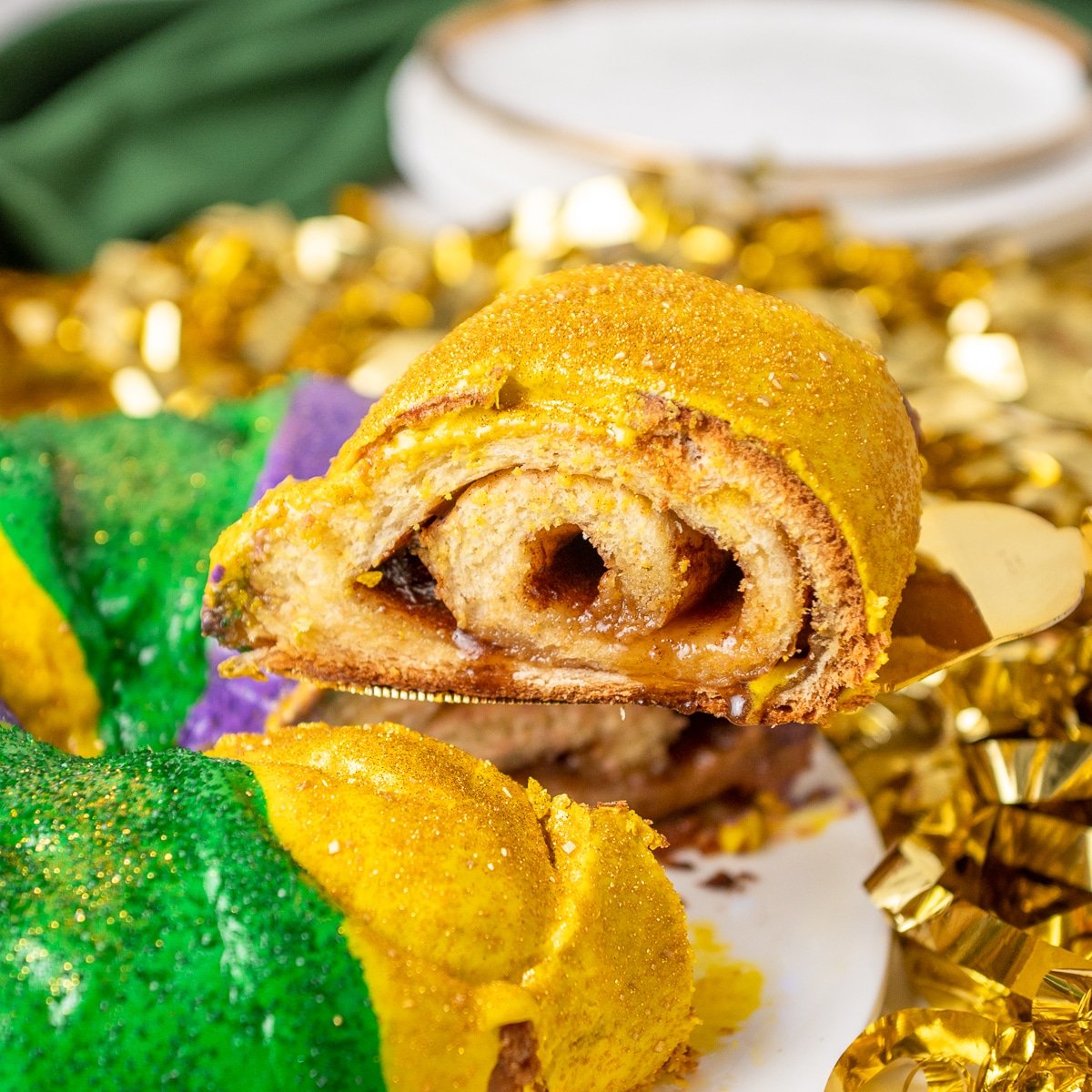 The traditional king cake has a religious background, so a tiny plastic baby is hidden inside to represent baby Jesus. Whoever gets the slice with the baby in it is said to have good luck, but is also responsible for bringing the king cake next year.
The traditional king cake has a religious background, so a tiny plastic baby is hidden inside to represent baby Jesus. Whoever gets the slice with the baby in it is said to have good luck, but is also responsible for bringing the king cake next year.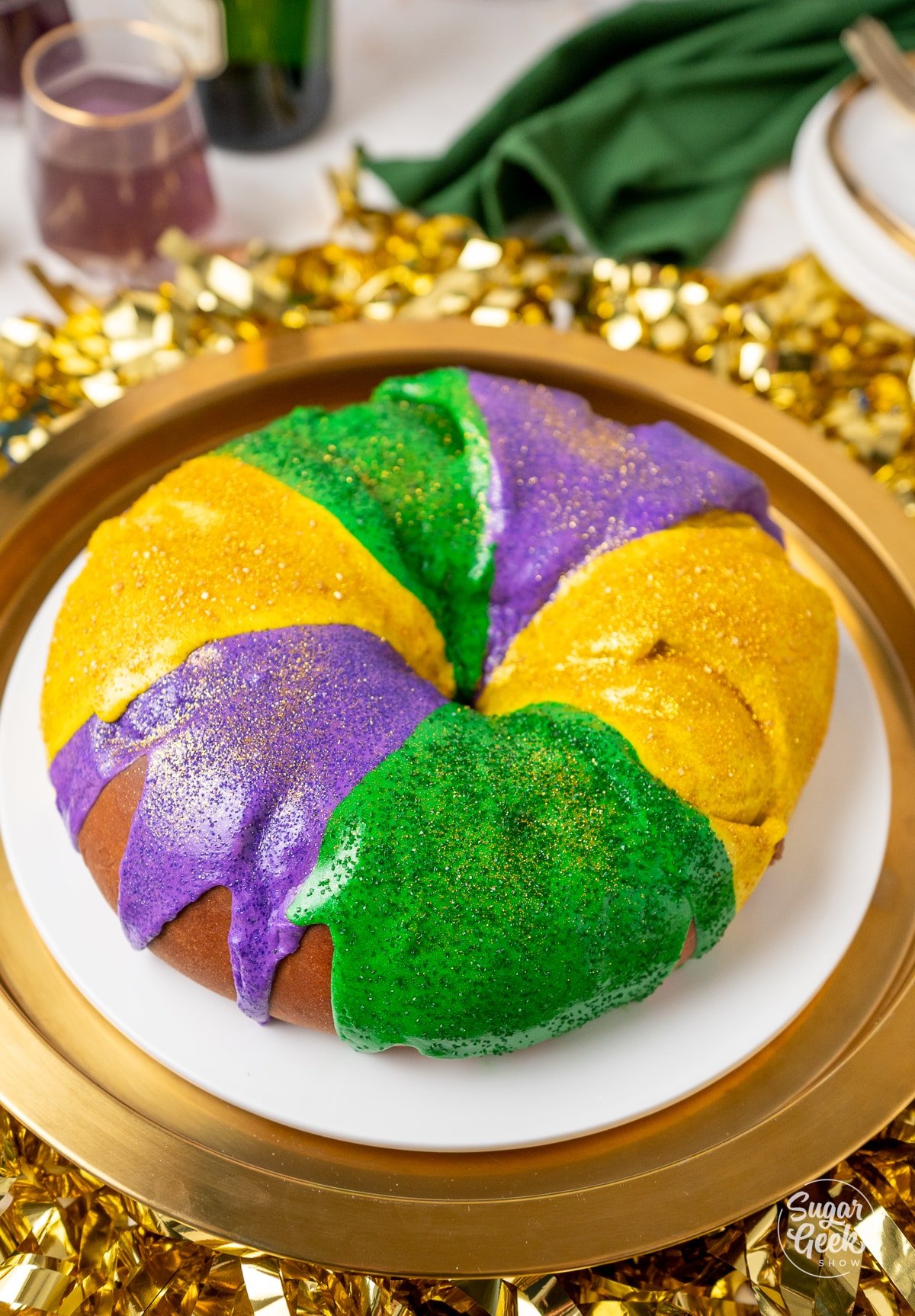
Table of contents
King Cake Ingredients
Yeast: I am using instant yeast because it is so easy to use and store. It is just added in with your dry ingredients, no need to "bloom it“ first. If you do not have instant yeast, you can substitute active dry yeast in the same measurement, just add it to your warm milk with a tablespoon of the measured brown sugar. Then let it dissolve and bubble for a few minutes.
Butter: King Cake dough is an enriched dough, meaning fat (butter) and sugar have been added to it. This makes the dough extra soft and moist.
Brown Sugar: I chose to use brown sugar to deepen the flavors of the dough and the filling. It also retains moisture because of the added molasses to the brown sugar.
How to Make a King Cake
Making a king cake is just like making cinnamon rolls, but even easier because you don't have to cut them into individual slices before baking. First, make the dough and make the filling while it's proofing, then roll the dough out and fill it, shape it into a ring, proof again, and bake. If you want to make it this king cake ahead, just refrigerate it after shaping it into a ring, then proof and bake the next day.
Making the Dough
- Combine the flour, yeast, and sugar in the bowl of your mixer with a dough hook attachment, mix the ingredients for a few seconds to distribute the yeast evenly.
- In a heat safe container, combine the milk and butter and heat to 110°F. This can be done in the microwave or in a small saucepan.
- While the mixer is running on low, pour in the milk and butter and then add the eggs, one at a time.
- Once the eggs have begun to incorporate, sprinkle in the salt. The salt is added last to give the yeast more of a chance to thrive.
- Scrape the sides of the bowl if necessary. Continue to mix on medium-low speed for 10-15 minutes to develop the gluten.
- After 10 minutes of mixing, check to see if the gluten is properly developed by using the “window test.” Stretch a piece of dough between your fingers and slowly pull it thin enough to see light coming through. If the dough tears, let it continue to mix for another 5 minutes.
- Once the dough is ready, cover it with plastic wrap or a tea towel and let the dough rise in a warm area for about an hour, until the dough doubles in size. Because of the added butter to the dough, it will not stick to the bowl. I like to place mine in my oven (turned off!) with the oven light on and the door cracked open.
Making the Filling
- Mix together the softened butter, brown sugar, and granulated sugar until combined.
- Add the cinnamon and mix slowly until fully combined and smooth.
- Warm it in the microwave for a few seconds so the mixture is a soft, easily spreadable consistency. If the filling mixture is hot it will warm the dough upon contact making it more difficult to move and shape, so keeping it at a moderate temperature is easier.
Forming the King Cake
- Preheat the oven to 350°F.
- When the dough is ready, dump it out onto a lightly floured surface. You will know your dough is ready because it has doubled in size and also keeps the indentation when you give it a poke.
- Gently spread the dough with your hands and then begin to roll it out to about a 10”x 20” rectangle with a rolling pin.
- Using an offset spatula, spread the filling on the dough evenly, leaving a border around the edges. If the filling is too thick in some spots it can bake unevenly.
- On the long side of the rectangle of dough, begin to roll up the dough evenly forming a long tube. Roll the dough gently and not too tightly, we want the dough to be able to expand while proofing.
- Once you reach the end of the dough roll, pinch the seam of the dough together. Brush a little water on the edge to help it stick to itself.
- Carefully place the dough onto a sheet pan lined with parchment paper or a silicone mat.
- Trim the excess dough with no filling off one end of the dough ring. Stretch back the dough on the other end of the roll and place the other end into it, overlapping to seal off the circle. Use a little water to seal the seam to the dough.
- Cover the king cake and place it in a warm spot to rise again for about 30 minutes.
Baking the King Cake
- Once the dough has risen and is puffed and soft, it is ready to bake. With a sharp knife or scissors, cut some vents around the top of the cake to allow it to expand. It will explode if you don’t.
- Bake the king cake in a 350°F oven for about 30-40 minutes.
- Rotate the cake halfway through baking to ensure even browning. The center of the dough should be near 190°F when it is finished baking, and it should be golden brown. Some filling will have spilled out, but it is okay, there is still plenty inside of the cake.
- Let the cake cool on the pan.
- Insert the plastic baby inside the cake. This is completely optional. Cut a small hole and push the plastic baby in. Later you’ll cover it with frosting to disguise where the plastic baby is.
- Once the cake is completely cool, transfer it to a serving plate.
Icing the King Cake
- In a large bowl, mix the powdered sugar, buttermilk, melted butter, vanilla extract, and almond extract on high with a whisk attachment for 2-3 minutes. Add a teaspoon of water at a time to thin it out as needed.
- Separate the icing into 3 bowls and add green, yellow, and purple food coloring. One color per bowl. Color the icing to your desired shade of color. The icing can also be left white.
- Drizzle the colored icing in sections around the ring of cake, then cover with the corresponding colored sprinkles before the icing dries.
- Let the icing set before cutting into the cake. It can be stored at room temperature but sealed in an airtight container. Though this is best eaten the same day, it is just as good days later warmed in the microwave for a few seconds.
FAQ
King cake freezes really well, I recommend you freeze it before it is frosted, and frost it prior to serving. Let the cake cool completely to room temperature, double wrap it tightly with plastic wrap and then wrap it again with aluminum foil. The king cake will keep for up to three months in the freezer. Thaw the cake to room temp then frost, sprinkle and serve.
Traditionally king cakes have a baby or toy figurine hidden in the cake, this can also be a nut or a bean. The person who gets the slice with the baby is the “king” or “queen” for the day, and is also responsible for bringing the next King Cake or host the next King Cake party. Of course, when serving the cake, make sure your guests are aware of the surprise in the cake, a cracked tooth is not a fun surprise! Often the baby is set on top of the cake to avoid any dangerous situations. I chose to place the baby in the cake after baking it, but this is completely optional.
The history of the king cake came from European and Roman Catholic roots, which made its way into the New Orleans area in the 1870s. In contrast to the French king cakes, which are flaky puff pastries, the New Orleans style is similar to the Spanish tradition, which is oval-shaped and topped with icing.
Gold, green and purple is the traditional colors of the sprinkles, which are the traditional colors of Mardi Gras. Gold represents power, green stands for faith, and purple is justice. What is the filling in a King Cake?
King Cakes come in numerous variations and can be filled with anything from cream cheese filling, almond paste, strawberry jam, chocolate, or coconut. The traditional filling, however, is cinnamon and sugar.
Related Recipes
Recipe

Ingredients
King Cake Dough
- 7 grams instant yeast (¼ oz or 1 packet)
- 3 ounces brown sugar (⅓ cup)
- 18 ounces all purpose flour (3 ⅓ cup) (or bread flour)
- 6 ounces whole milk (¾ cup) warmed to 110°F
- 5 ounces unsalted butter (½ cup + 2 Tbsp)
- 2 large eggs room temperature
- 1 teaspoon salt
King Cake Filling
- 4 ounces granulated sugar (½ cup)
- 4 ounces brown sugar (½ cup)
- 4 ounces unsalted butter (½ cup) softened
- 1 pinch salt
- 3 Tablespoons cinnamon
King Cake Icing
- 16 ounces powdered sugar
- 2 ounces buttermilk (¼ cup)
- 3 Tablespoons unsalted butter melted
- 1 teaspoon vanilla extract
- ½ teaspoon almond extract optional
- 1 teaspoon water as needed
- gold, green, and purple sprinkles
- 1 teaspoon yellow gel food coloring
- 1 teaspoon green gel food coloring
- 1 teaspoon purple gel food coloring
Instructions
Making the Dough
- Combine the flour, yeast, and sugar in the bowl of your mixer with a dough hook attachment, mix the ingredients for a few seconds to distribute the yeast evenly.
- In a heat safe container, combine the milk and butter and heat to 110°F. This can be done in the microwave or in a small saucepan.
- While the mixer is running on low, pour in the milk and butter and then add the eggs, one at a time.
- Once the eggs have begun to incorporate, sprinkle in the salt. The salt is added last to give the yeast more of a chance to thrive.
- Scrape the sides of the bowl if necessary. Continue to mix on medium-low speed for 10-15 minutes to develop the gluten.
- After 10 minutes of mixing, check to see if the gluten is properly developed by using the “window test.” Stretch a piece of dough between your fingers and slowly pull it thin enough to see light coming through. If the dough tears, let it continue to mix for another 5 minutes.
- Once the dough is ready, cover it with plastic wrap or a tea towel and let the dough rise in a warm area for about an hour, until the dough doubles in size. Because of the added butter to the dough, it will not stick to the bowl. I like to place mine in my oven (turned off!) with the oven light on and the door cracked open.
Making the Filling
- Mix together the softened butter, brown sugar, and granulated sugar until combined.
- Add the cinnamon and mix slowly until fully combined and smooth.
- Warm it in the microwave for a few seconds so the mixture is a soft, easily spreadable consistency. If the filling mixture is hot it will warm the dough upon contact making it more difficult to move and shape, so keeping it at a moderate temperature is easier.
Forming the King Cake
- Preheat the oven to 350°F.
- When the dough is ready, dump it out onto a lightly floured surface. You will know your dough is ready because it has doubled in size and also keeps the indentation when you give it a poke.
- Gently spread the dough with your hands and then begin to roll it out to about a 10”x 20” rectangle with a rolling pin.
- Using an offset spatula, spread the filling on the dough evenly, leaving a border around the edges. If the filling is too thick in some spots it can bake unevenly.
- On the long side of the rectangle of dough, begin to roll up the dough evenly forming a long tube. Roll the dough gently and not too tightly, we want the dough to be able to expand while proofing.
- Once you reach the end of the dough roll, pinch the seam of the dough together. Brush a little water on the edge to help it stick to itself.
- Carefully place the dough onto a sheet pan lined with parchment paper or a silicone mat.
- Trim the excess dough with no filling off one end of the dough ring. Stretch back the dough on the other end of the roll and place the other end into it, overlapping to seal off the circle. Use a little water to seal the seam to the dough.
- Cover the king cake and place it in a warm spot to rise again for about 30 minutes.
Baking the King Cake
- Once the dough has risen and is puffed and soft, it is ready to bake. With a sharp knife or scissors, cut some vents around the top of the cake to allow it to expand. It will explode if you don’t.
- Bake the king cake in a 350°F oven for about 30-40 minutes.
- Rotate the cake halfway through baking to ensure even browning. The center of the dough should be near 190°F when it is finished baking, and it should be golden brown. Some filling will have spilled out, but it is okay, there is still plenty inside of the cake.
- Let the cake cool on the pan.
- Insert the plastic baby inside the cake. This is completely optional. Cut a small hole and push the plastic baby in. Later you’ll cover it with frosting to disguise where the plastic baby is.
- Once the cake is completely cool, transfer it to a serving plate.
Icing the King Cake
- In a large bowl, mix the powdered sugar, buttermilk, melted butter, vanilla extract, and almond extract on high with a whisk attachment for 2-3 minutes. Add a teaspoon of water at a time to thin it out as needed.
- Separate the icing into 3 bowls and add green, yellow, and purple food coloring. One color per bowl. Color the icing to your desired shade of color. The icing can also be left white.
- Drizzle the colored icing in sections around the ring of cake, then cover with the corresponding colored sprinkles before the icing dries.
- Let the icing set before cutting into the cake. It can be stored at room temperature but sealed in an airtight container. Though this is best eaten the same day, it is just as good days later warmed in the microwave for a few seconds.
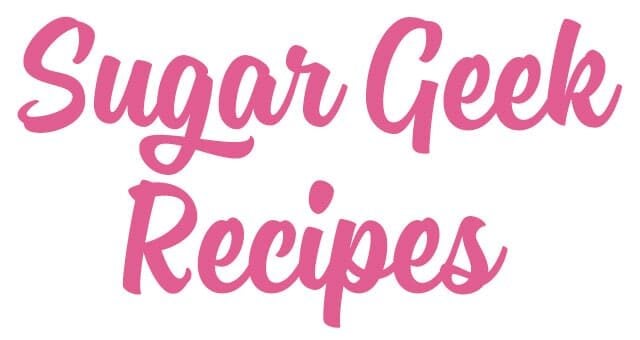

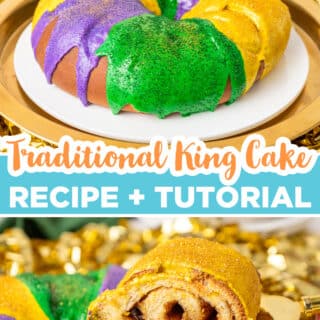
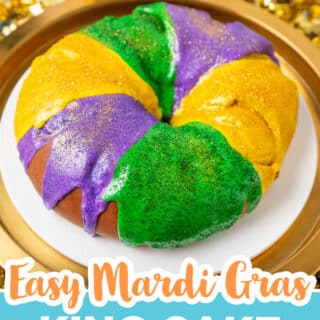
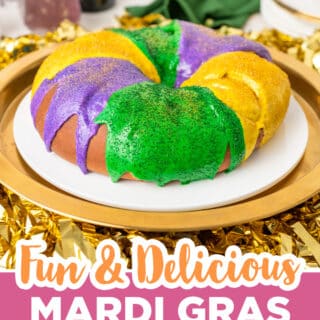
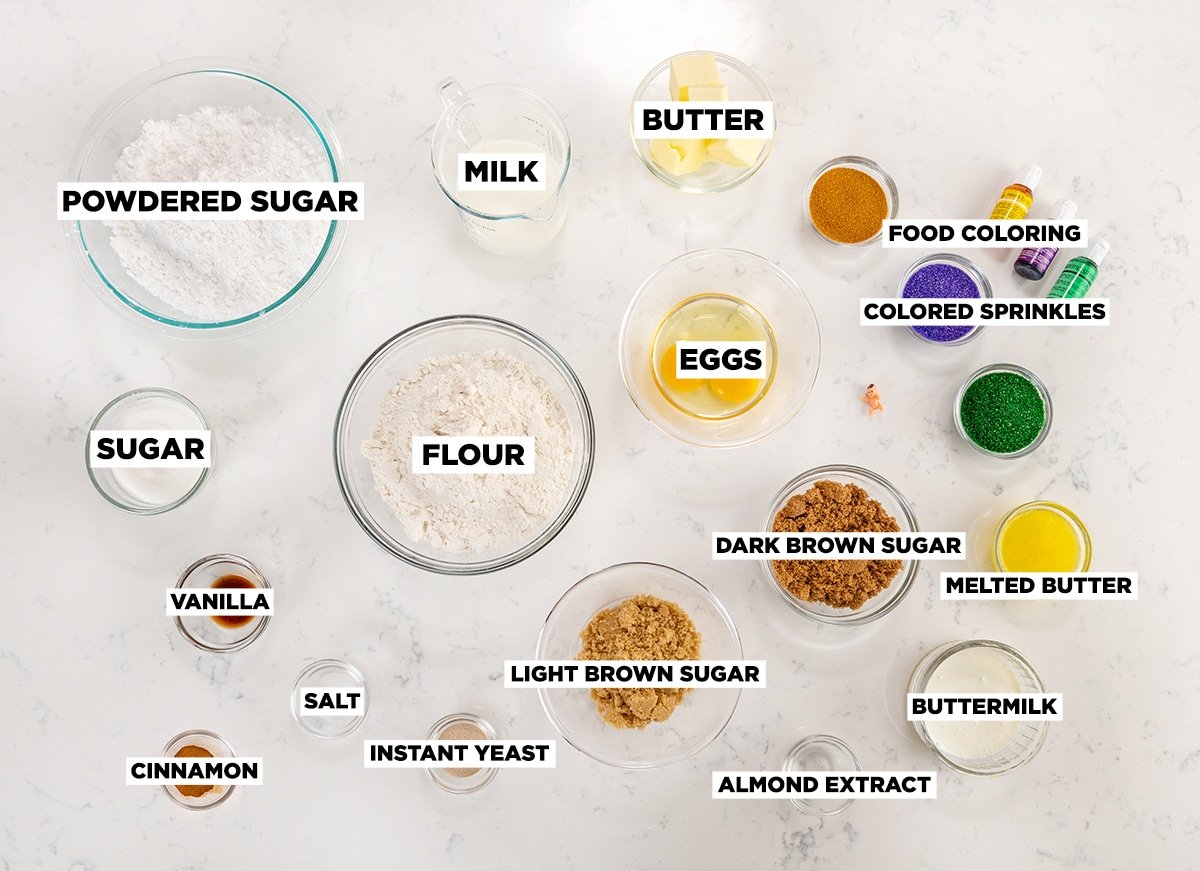
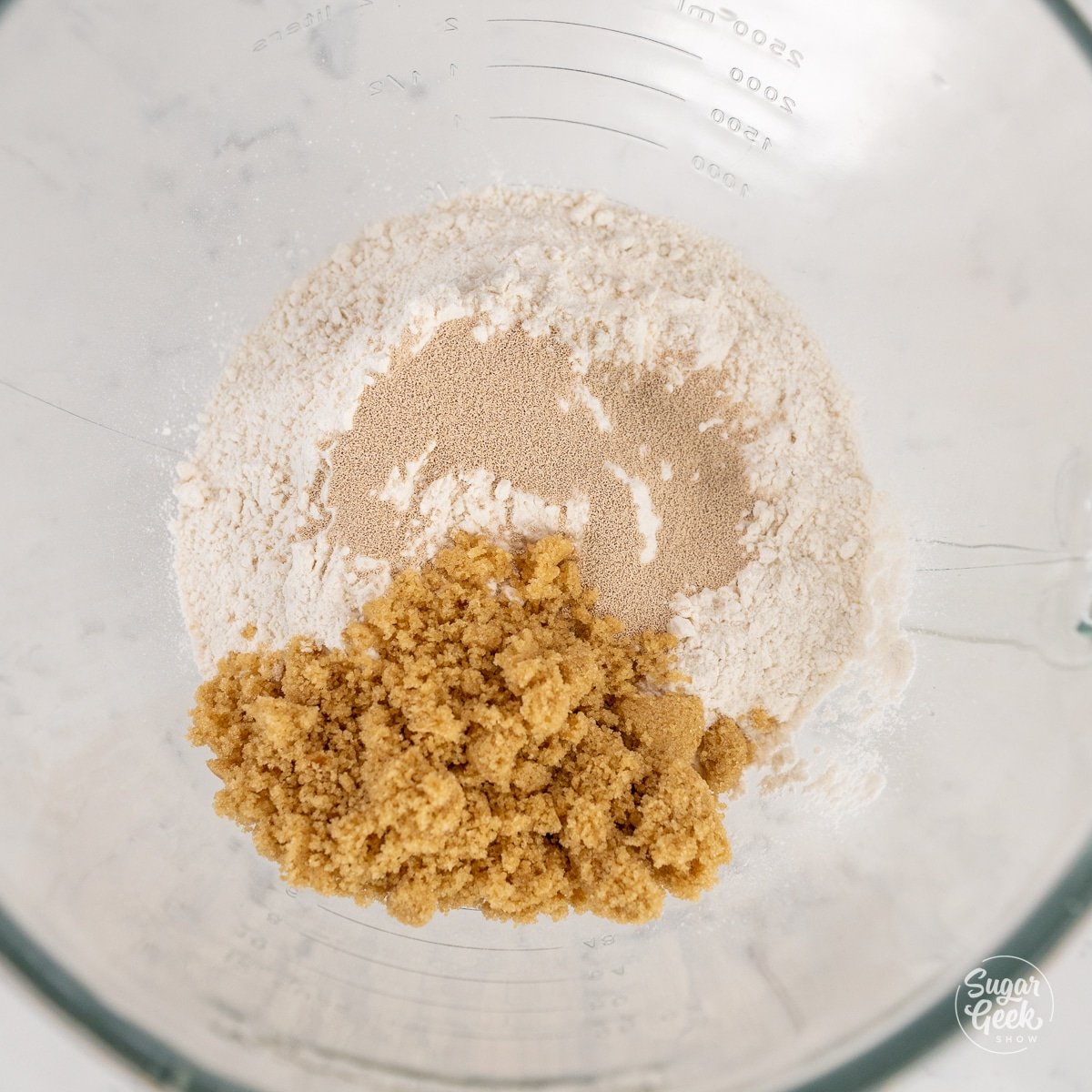
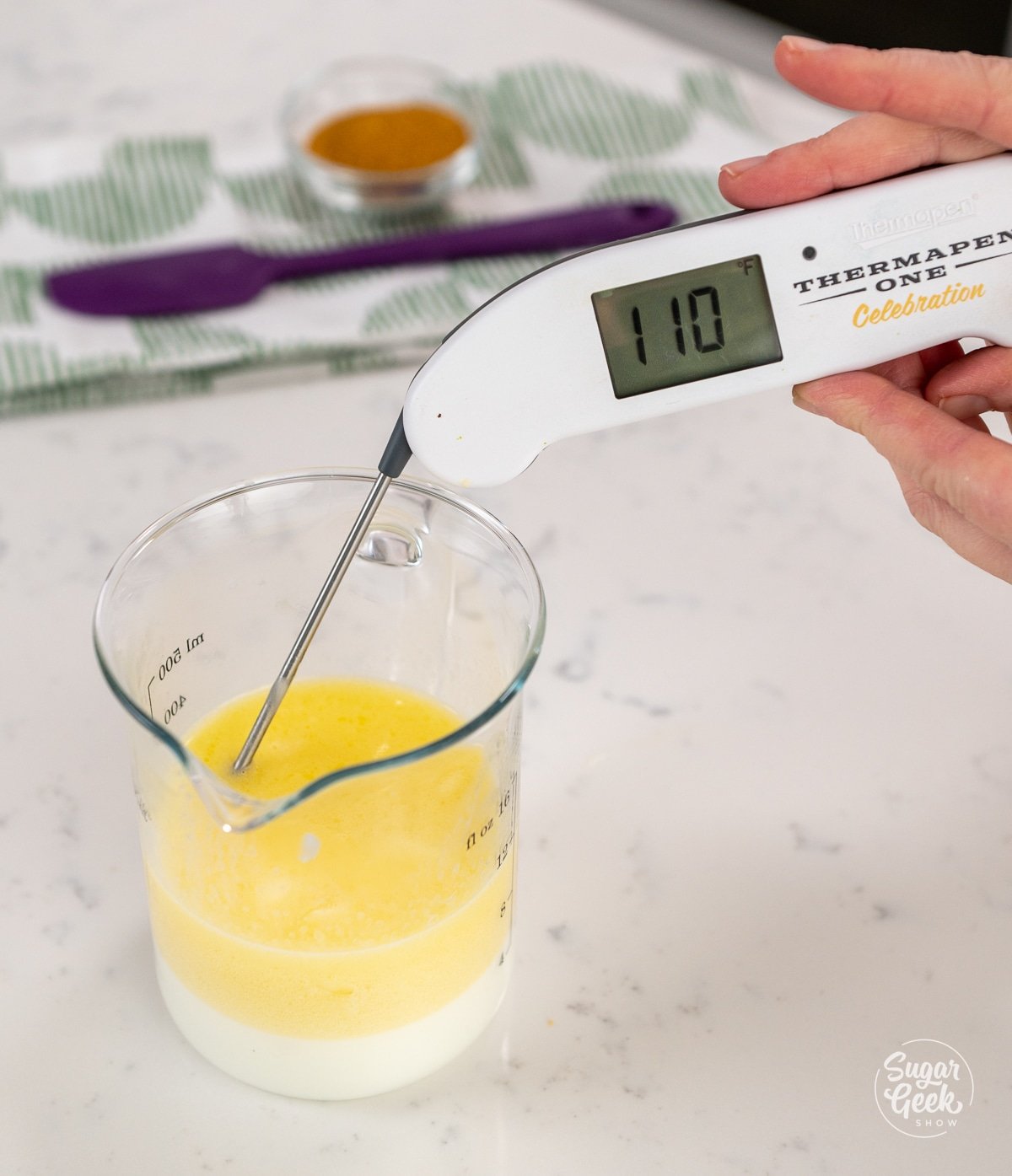
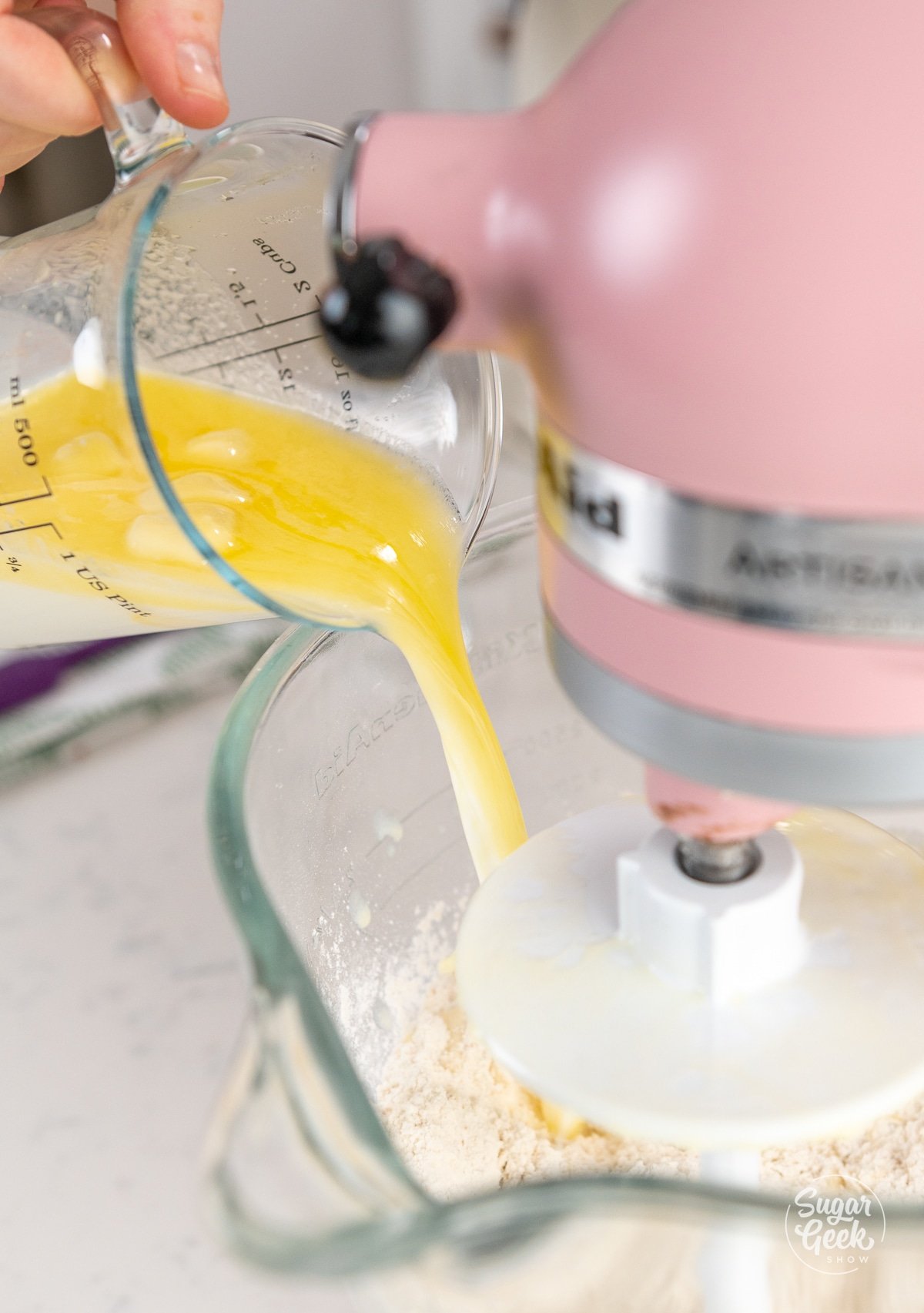
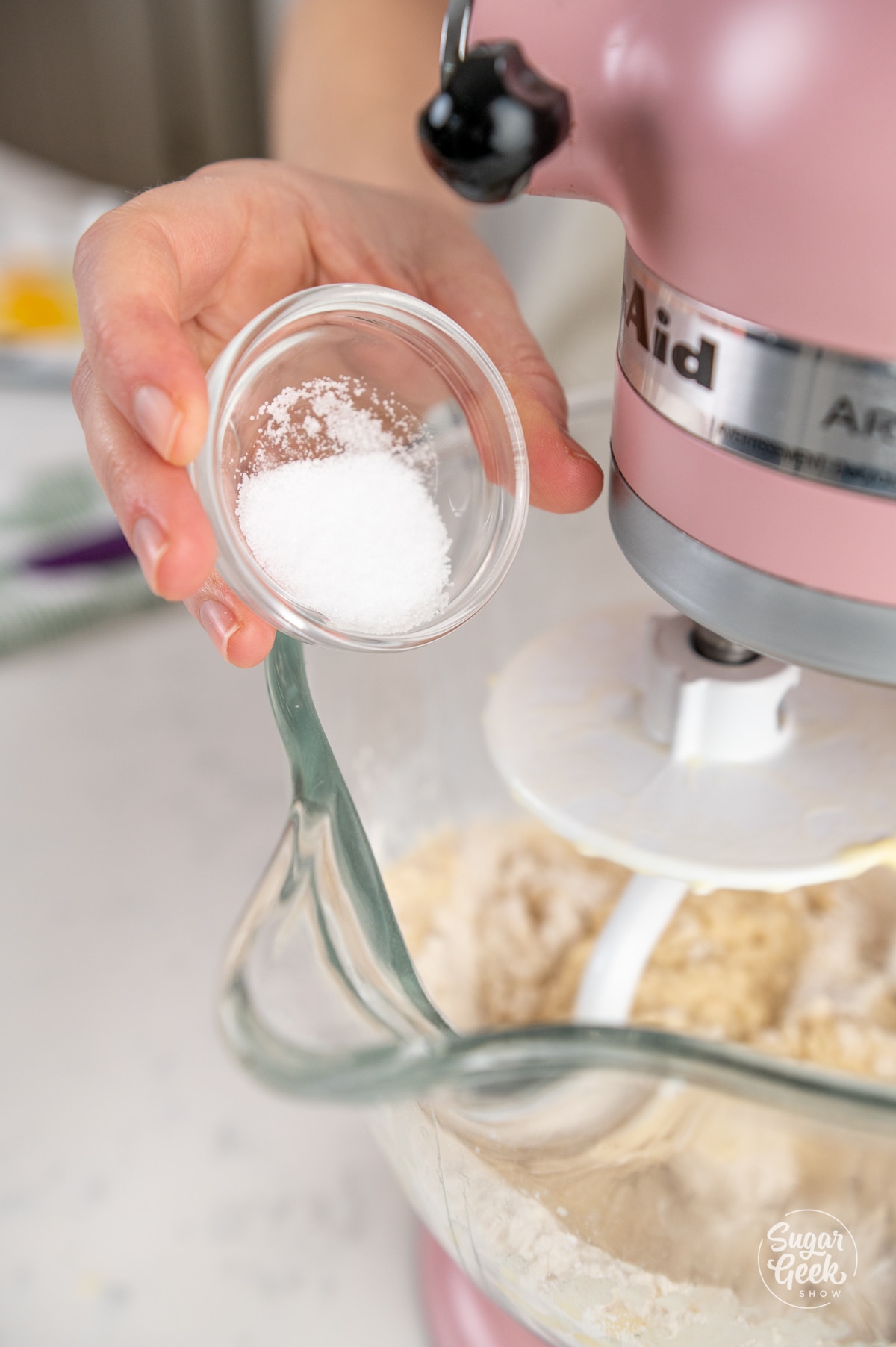
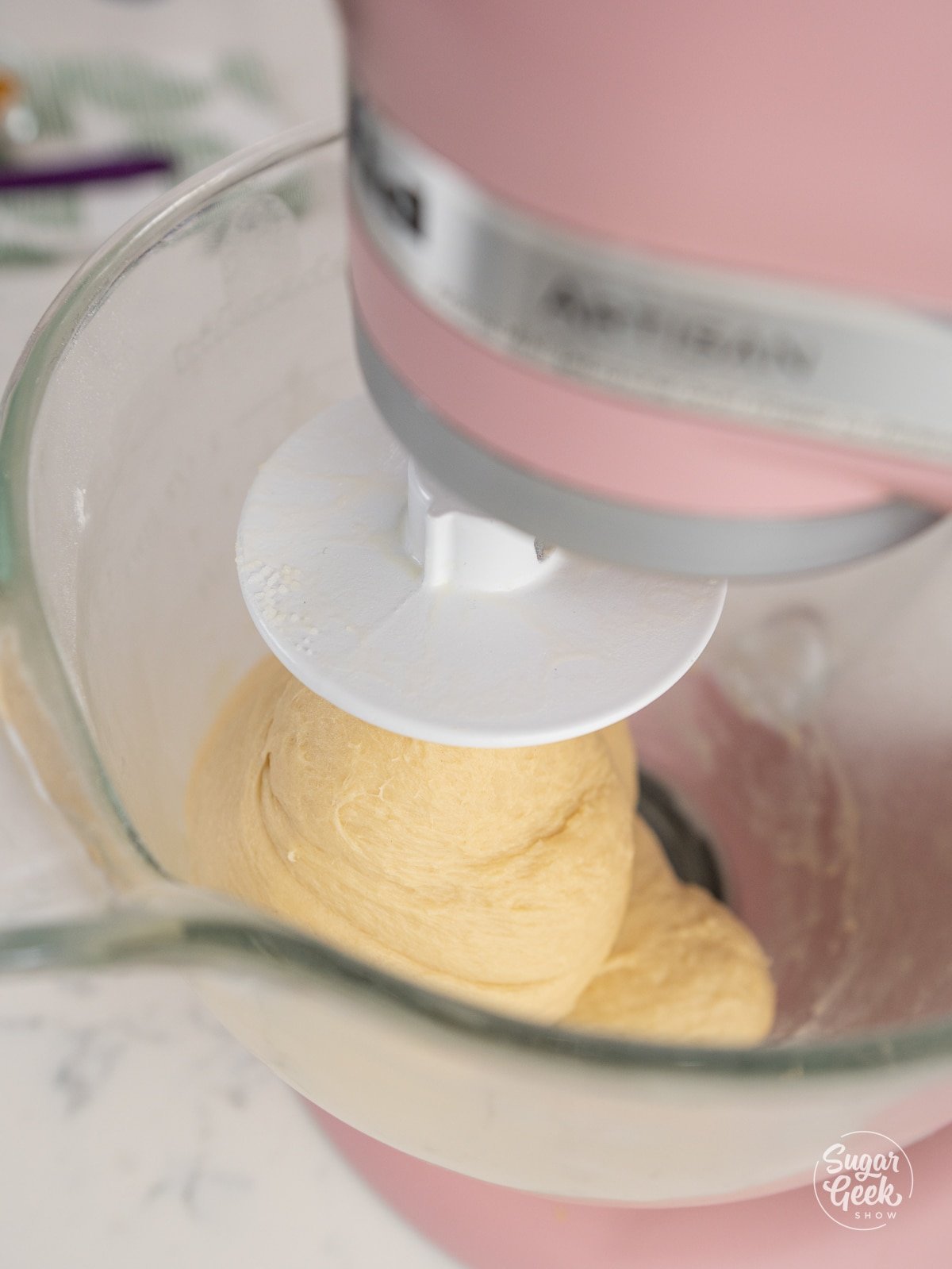
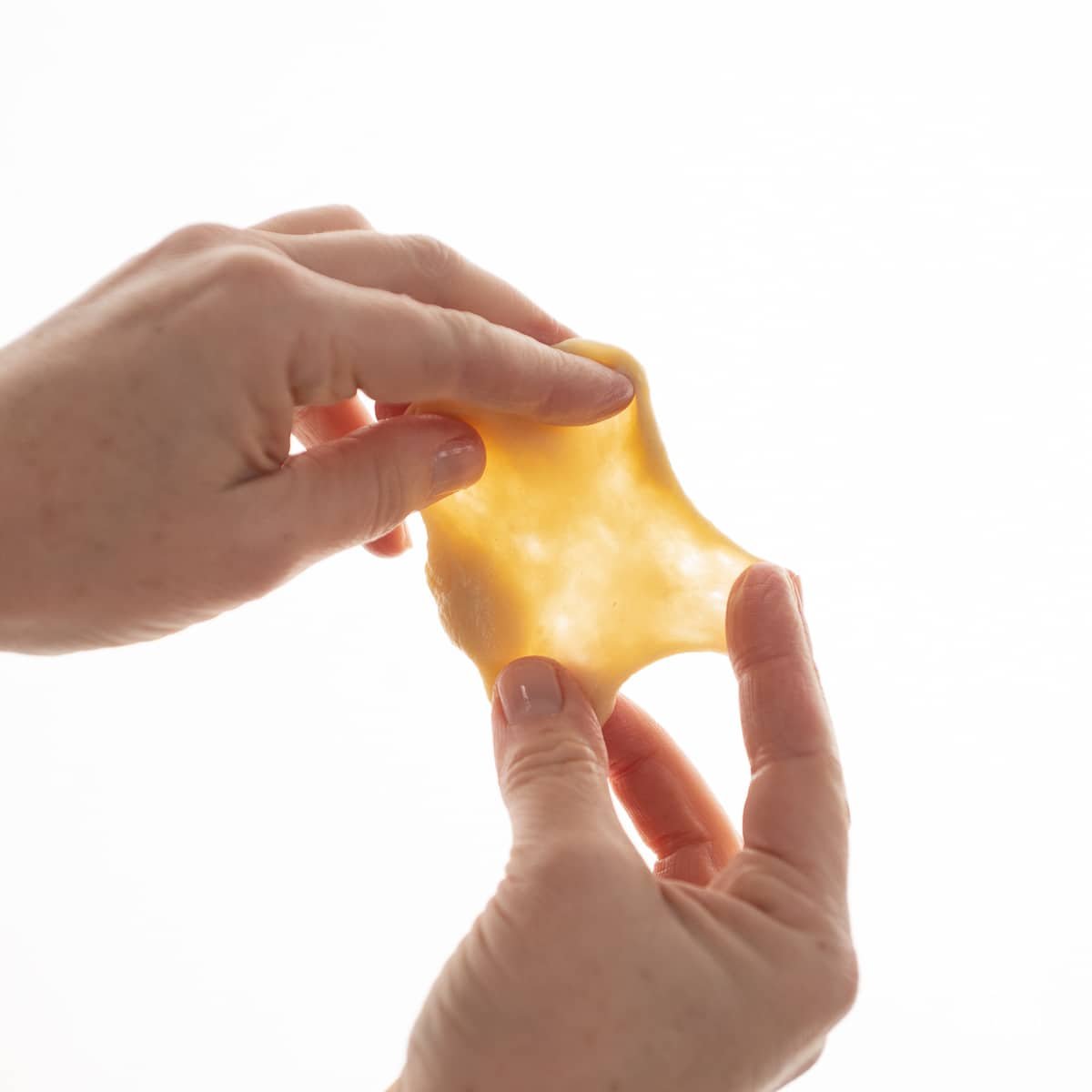
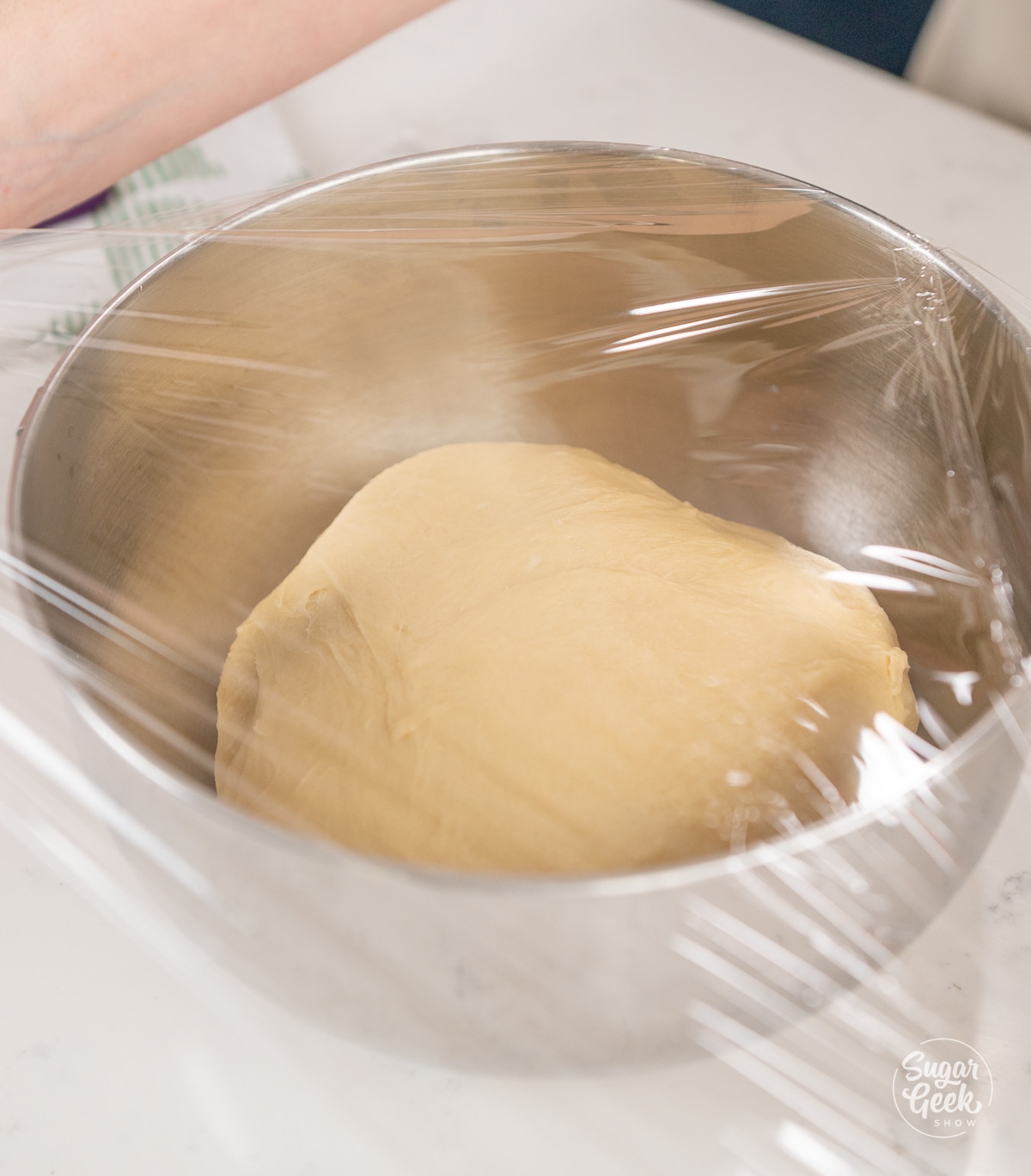
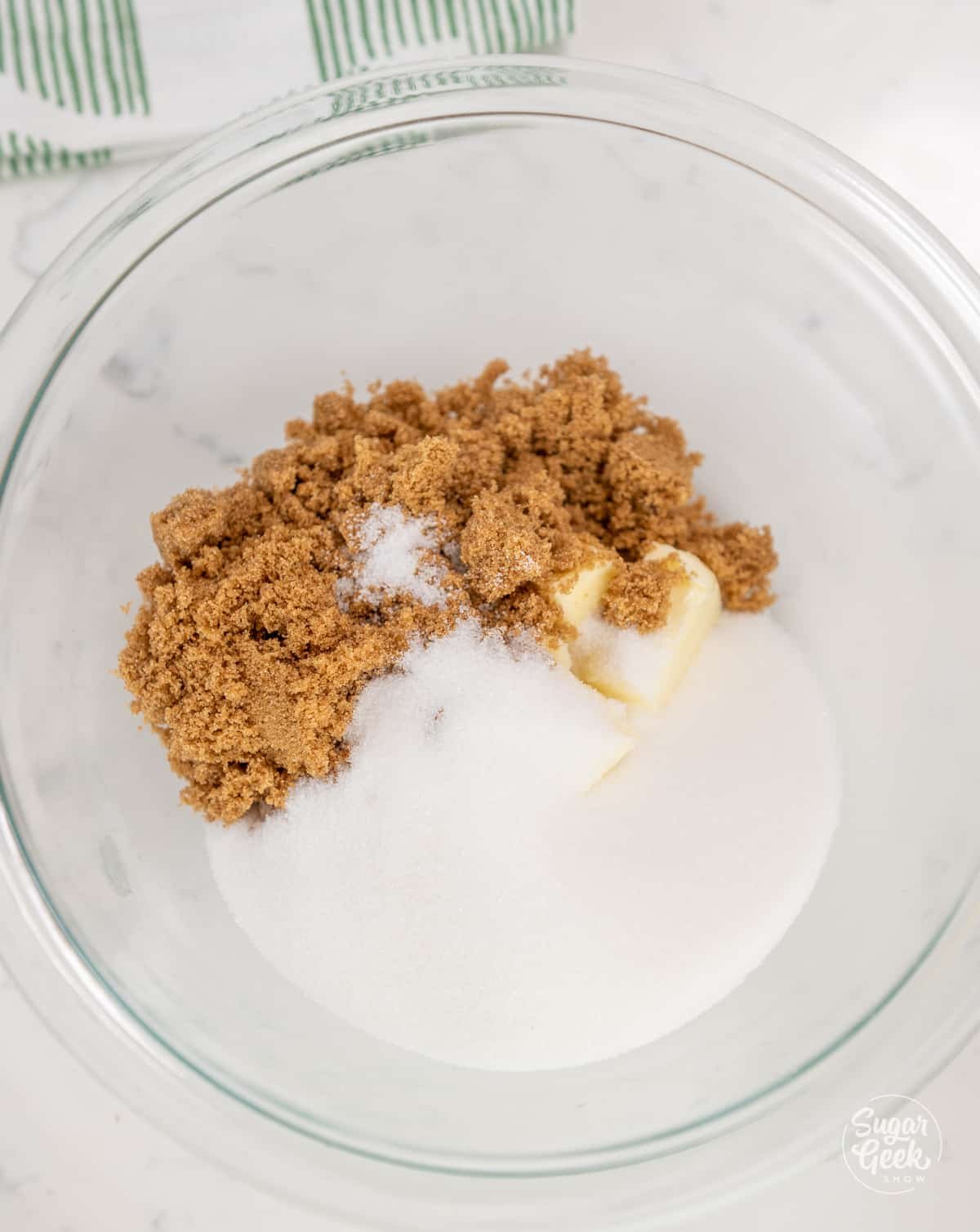
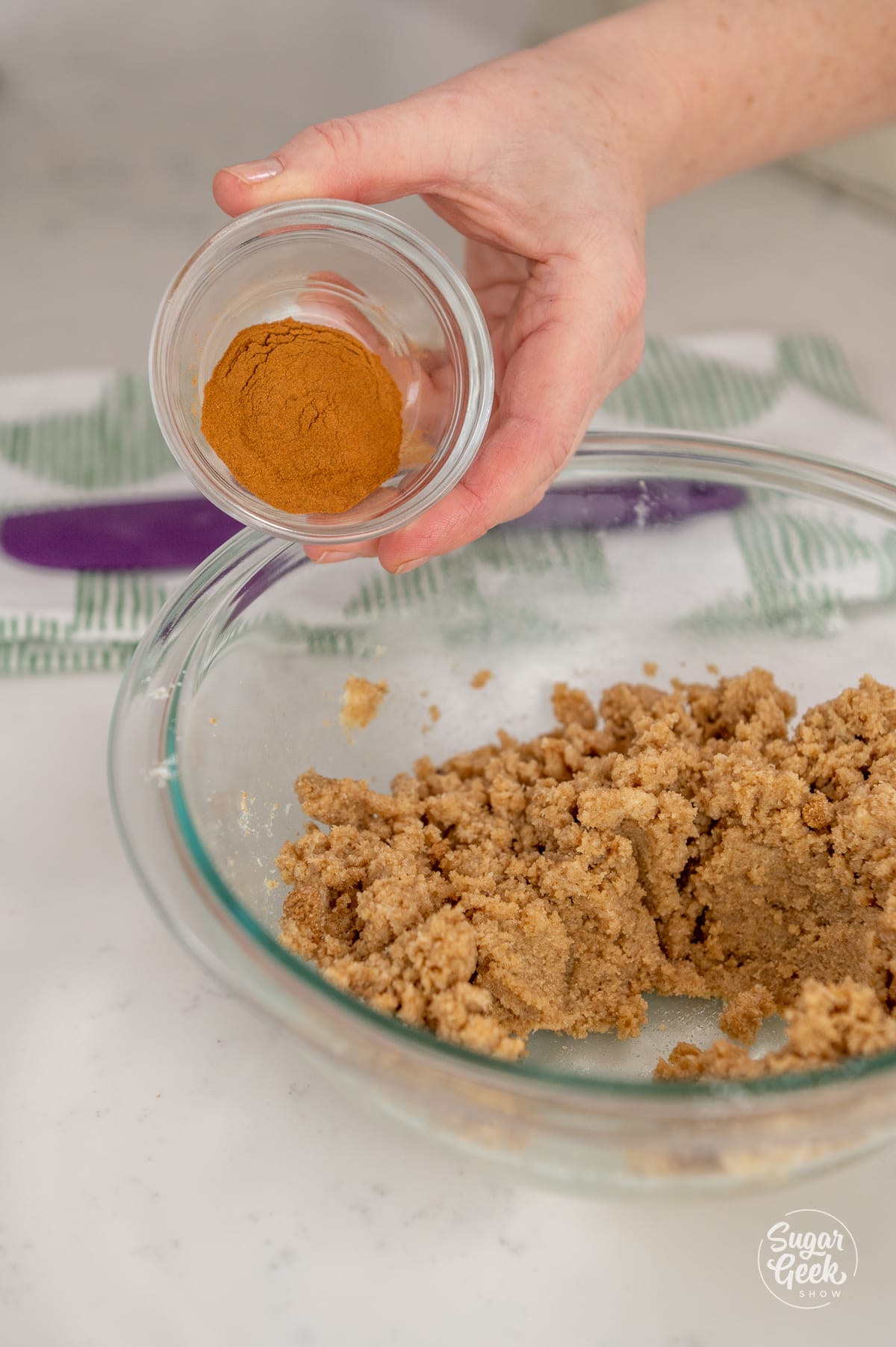
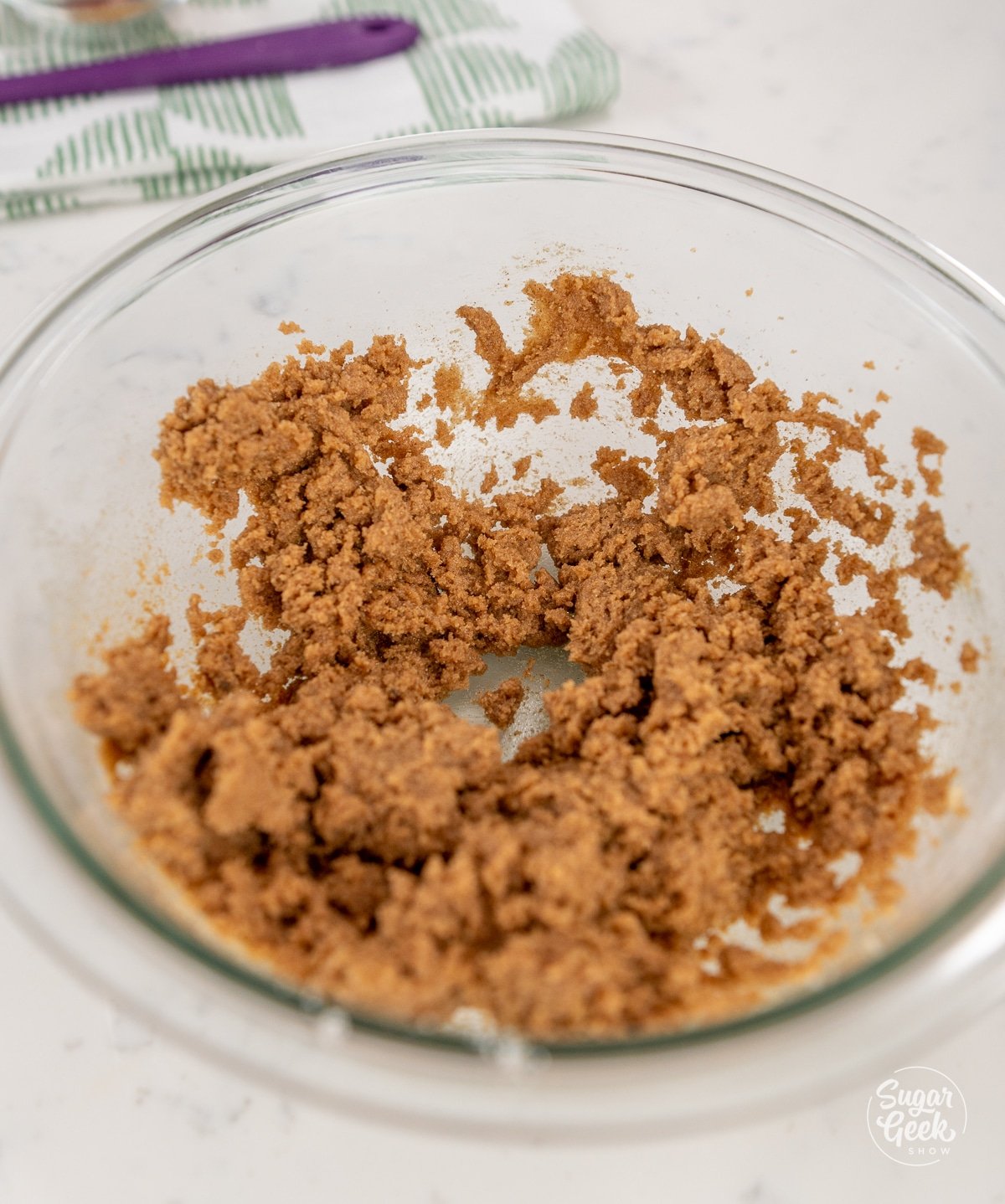
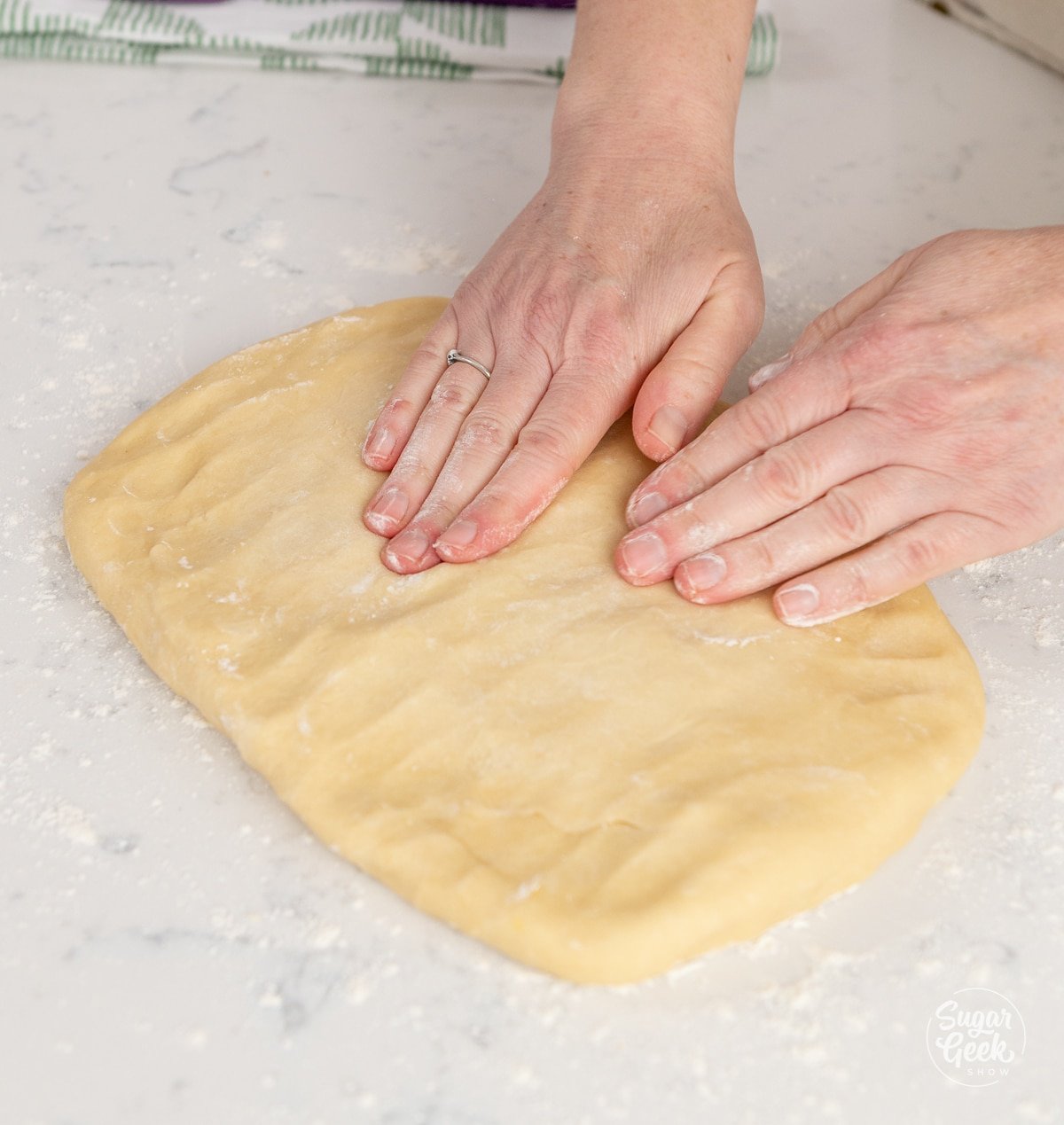
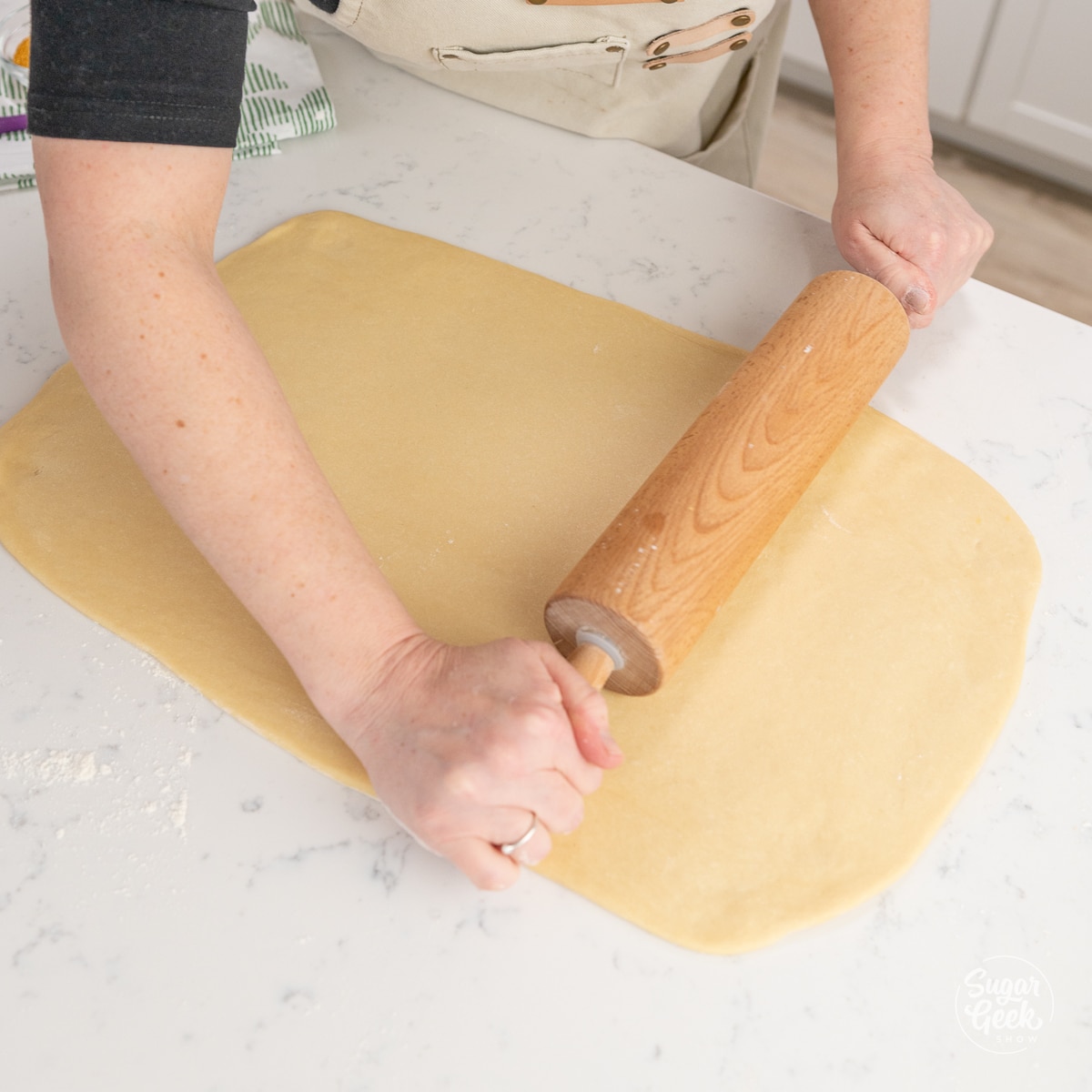
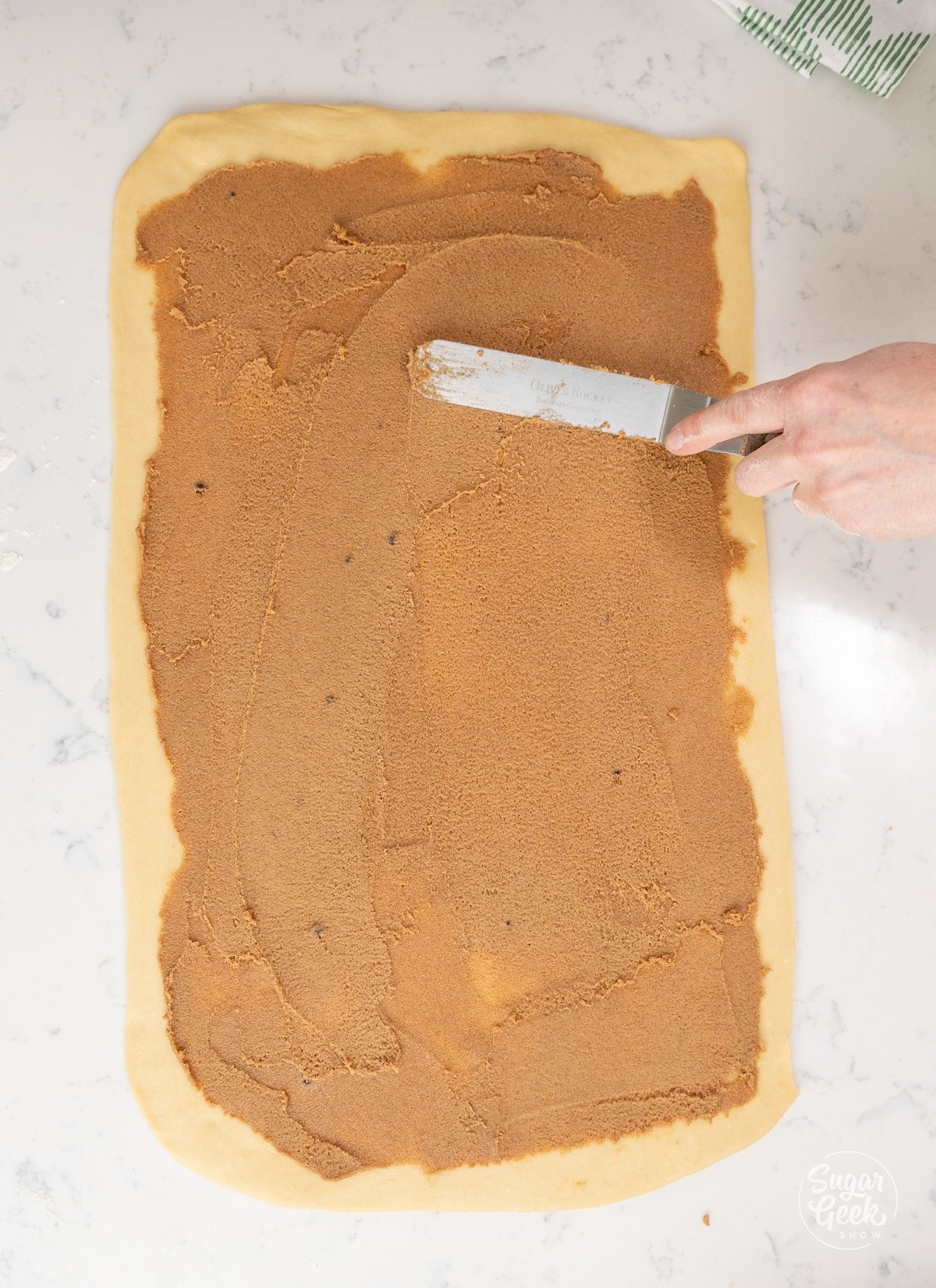
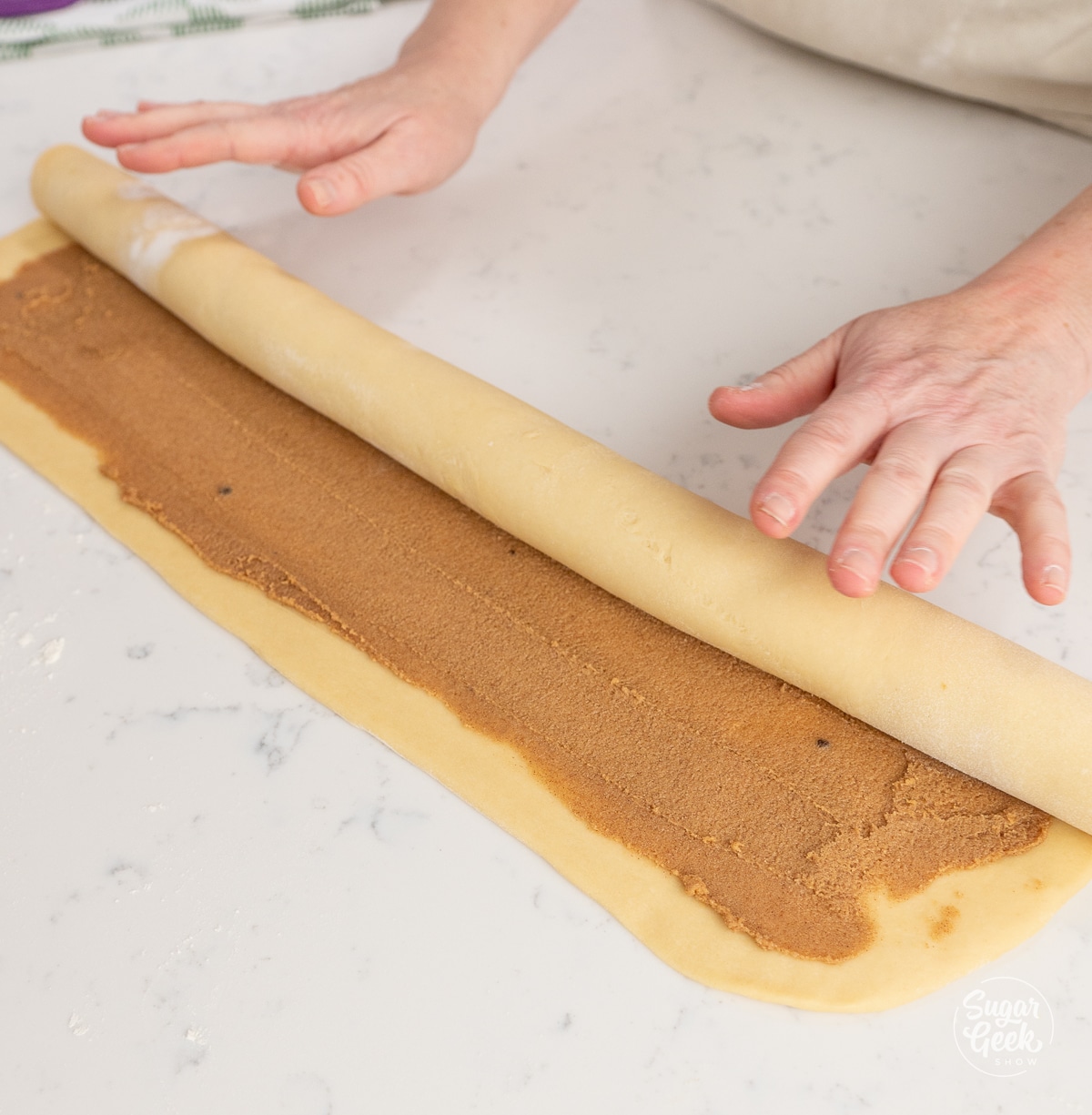
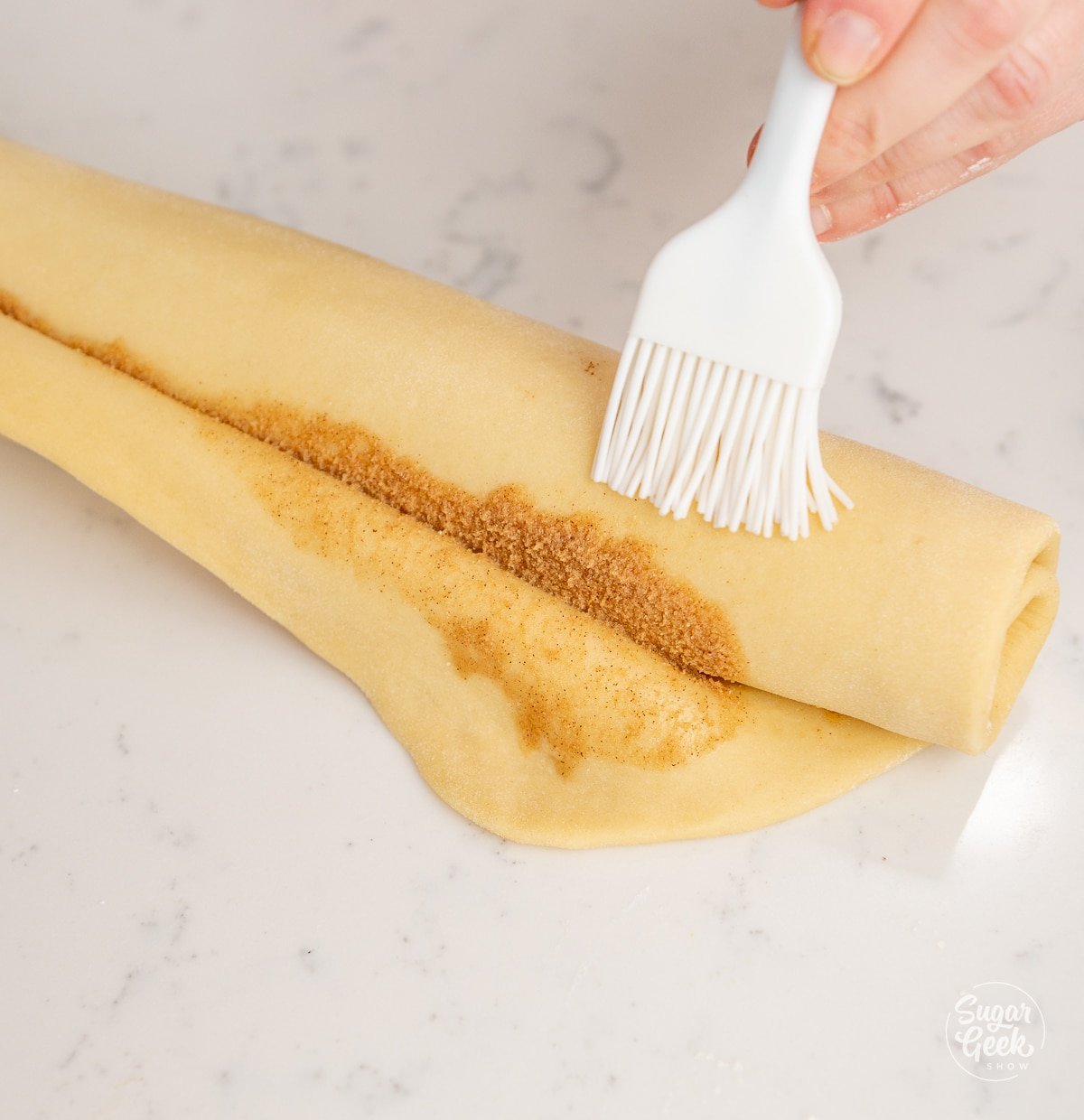
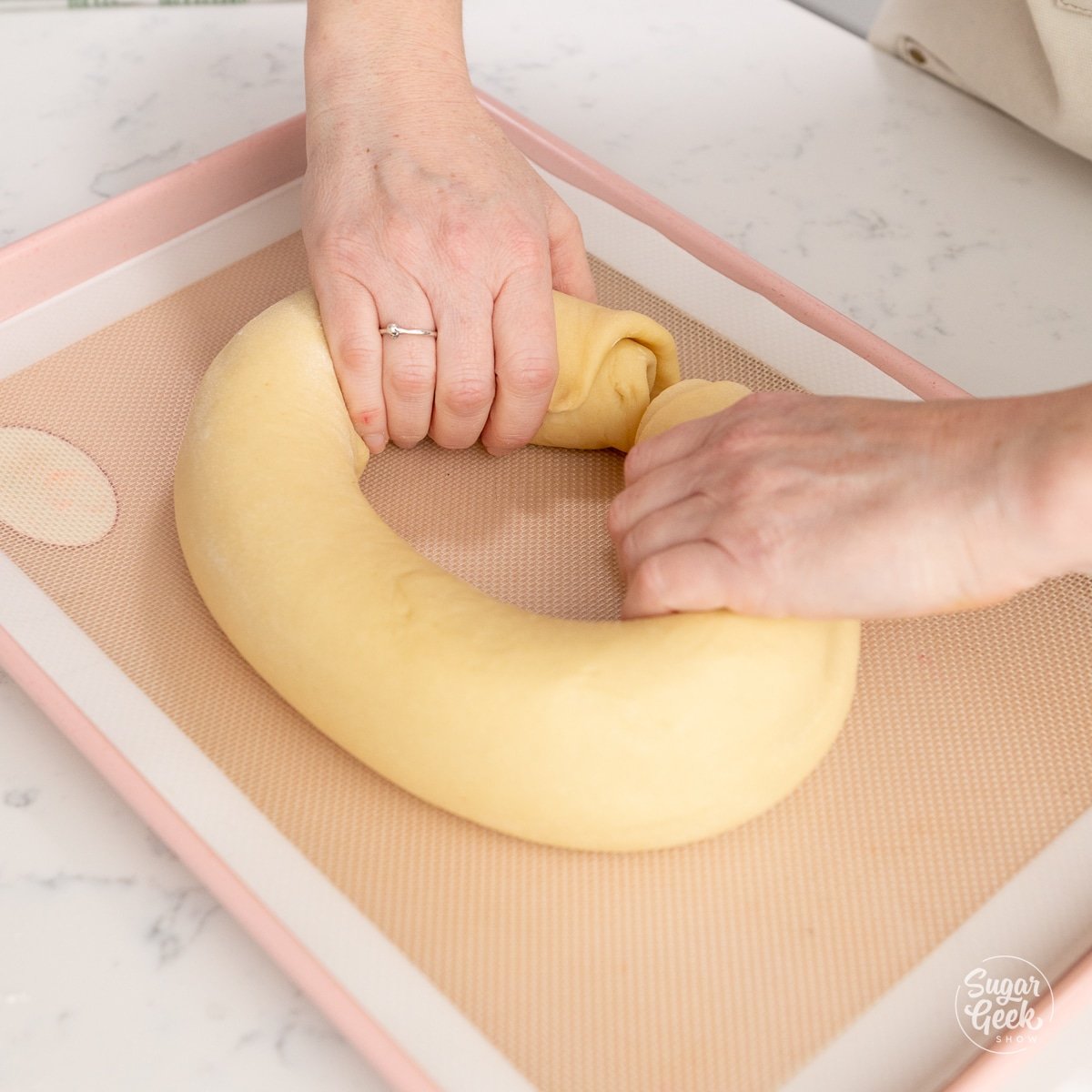
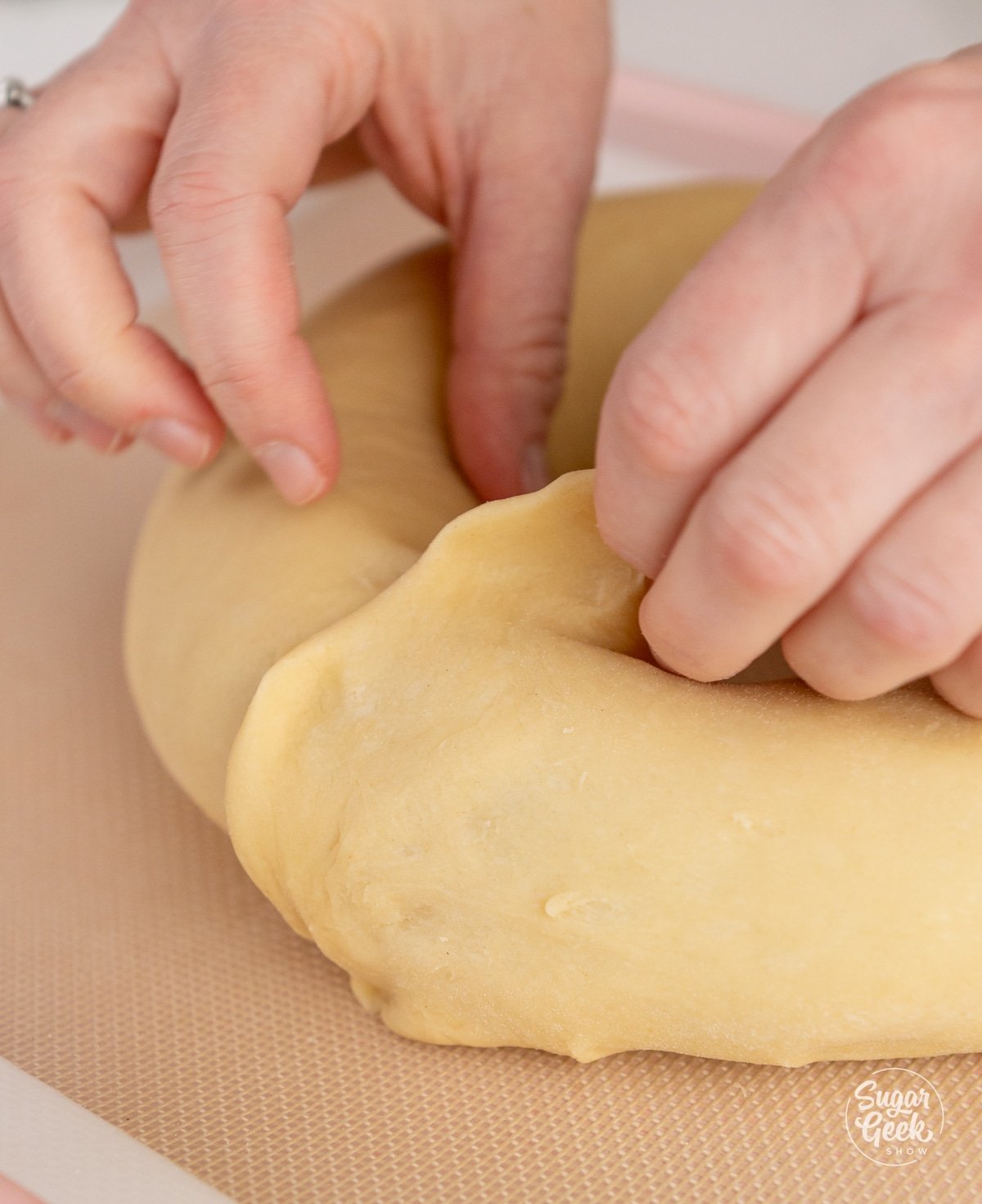
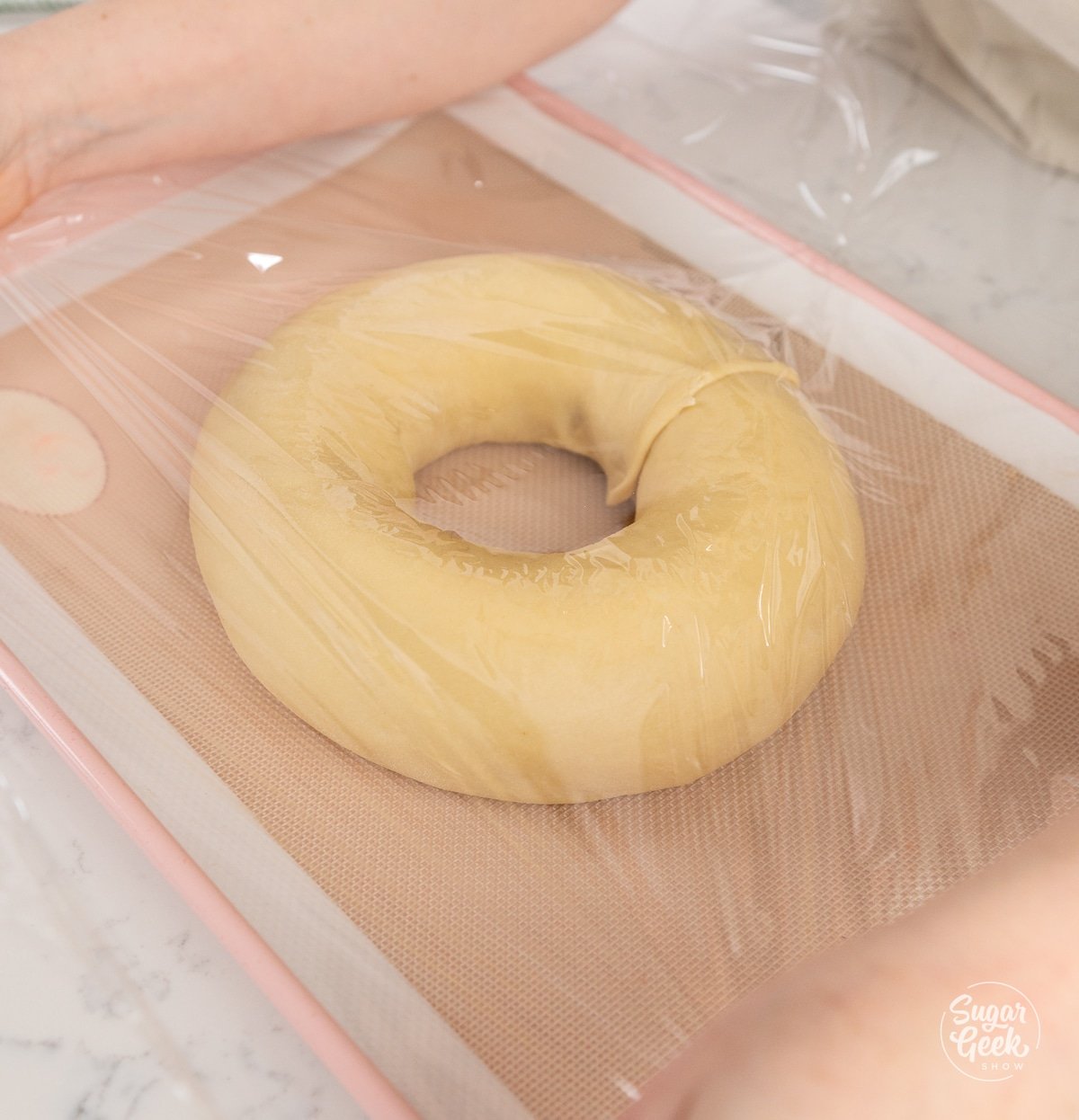
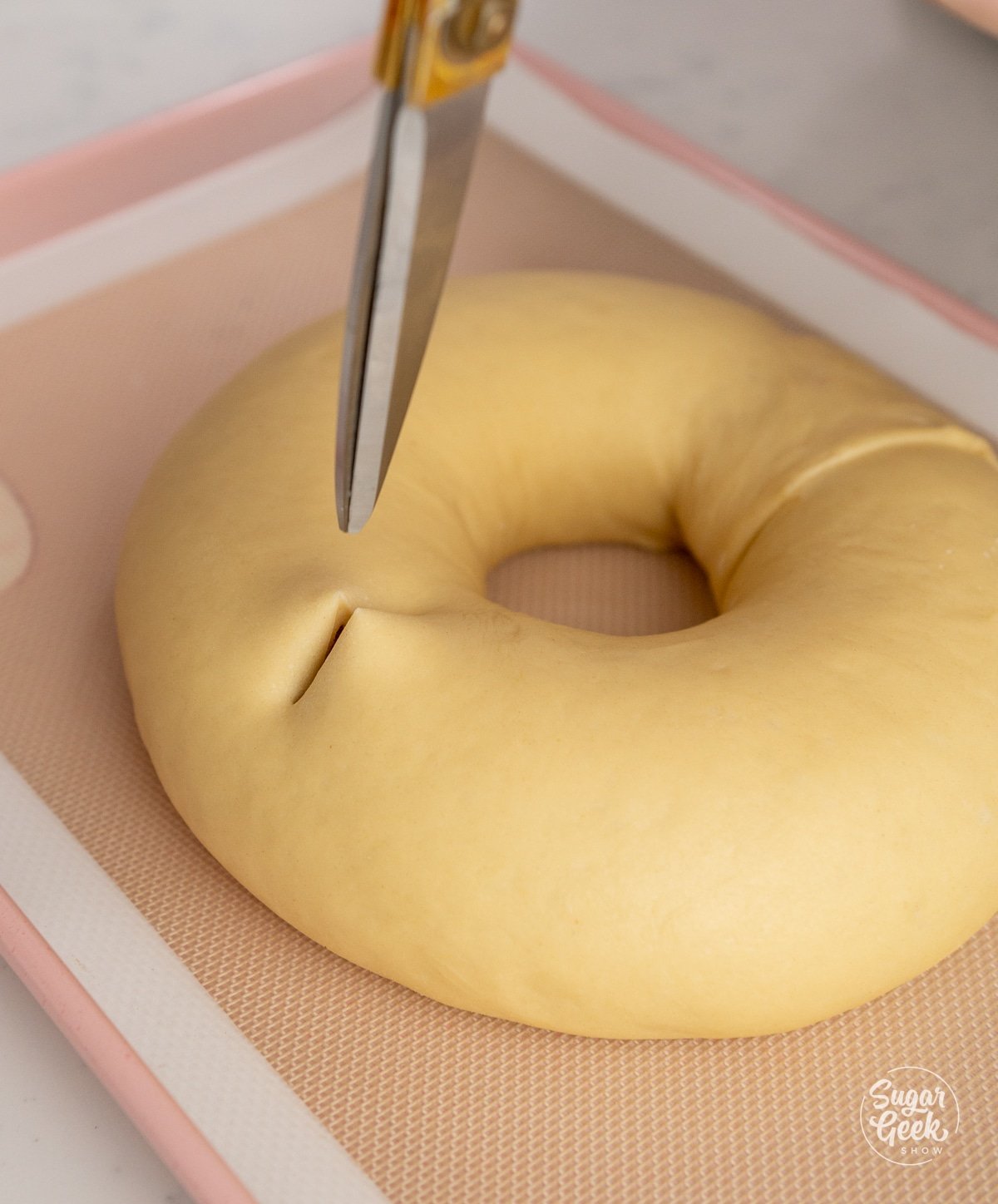
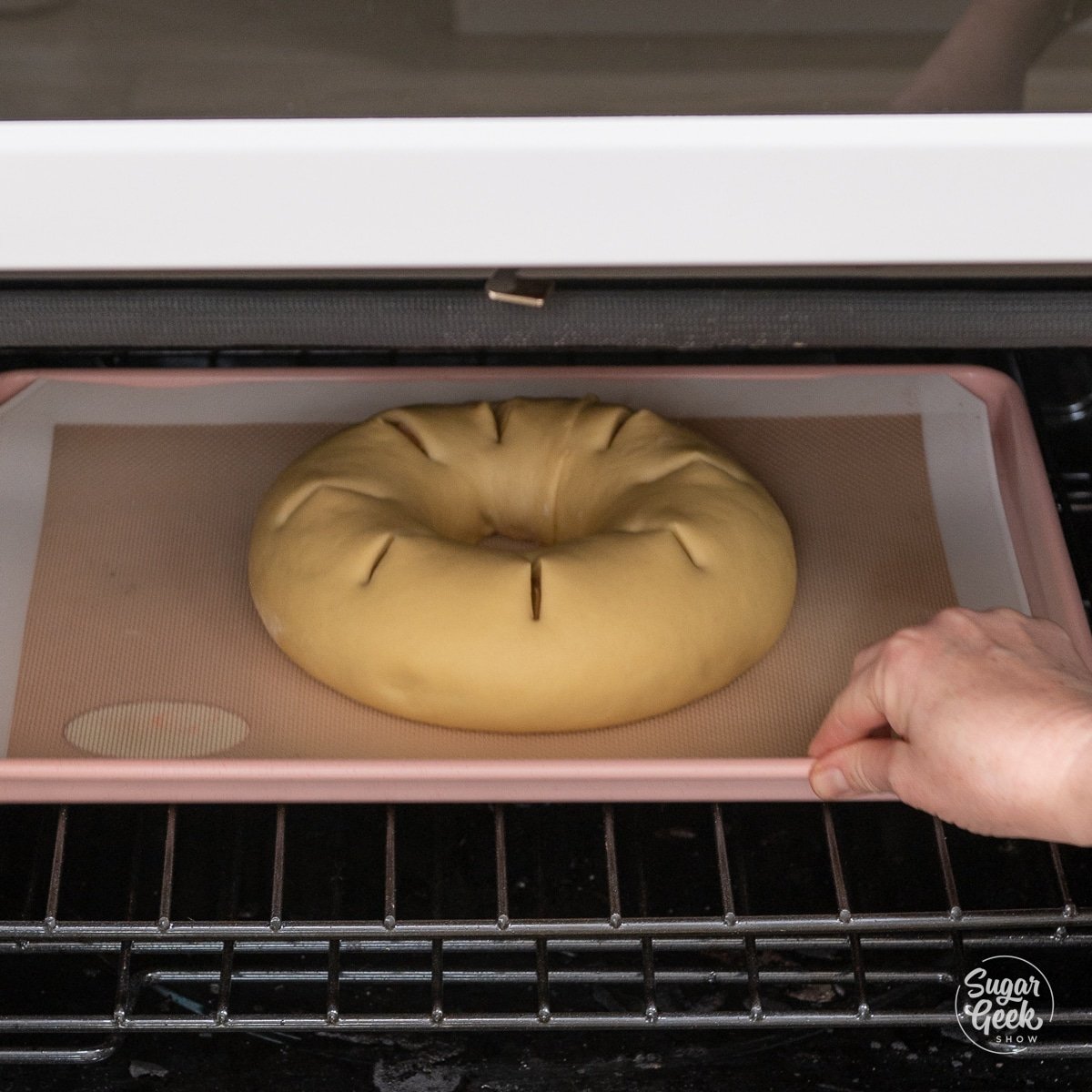
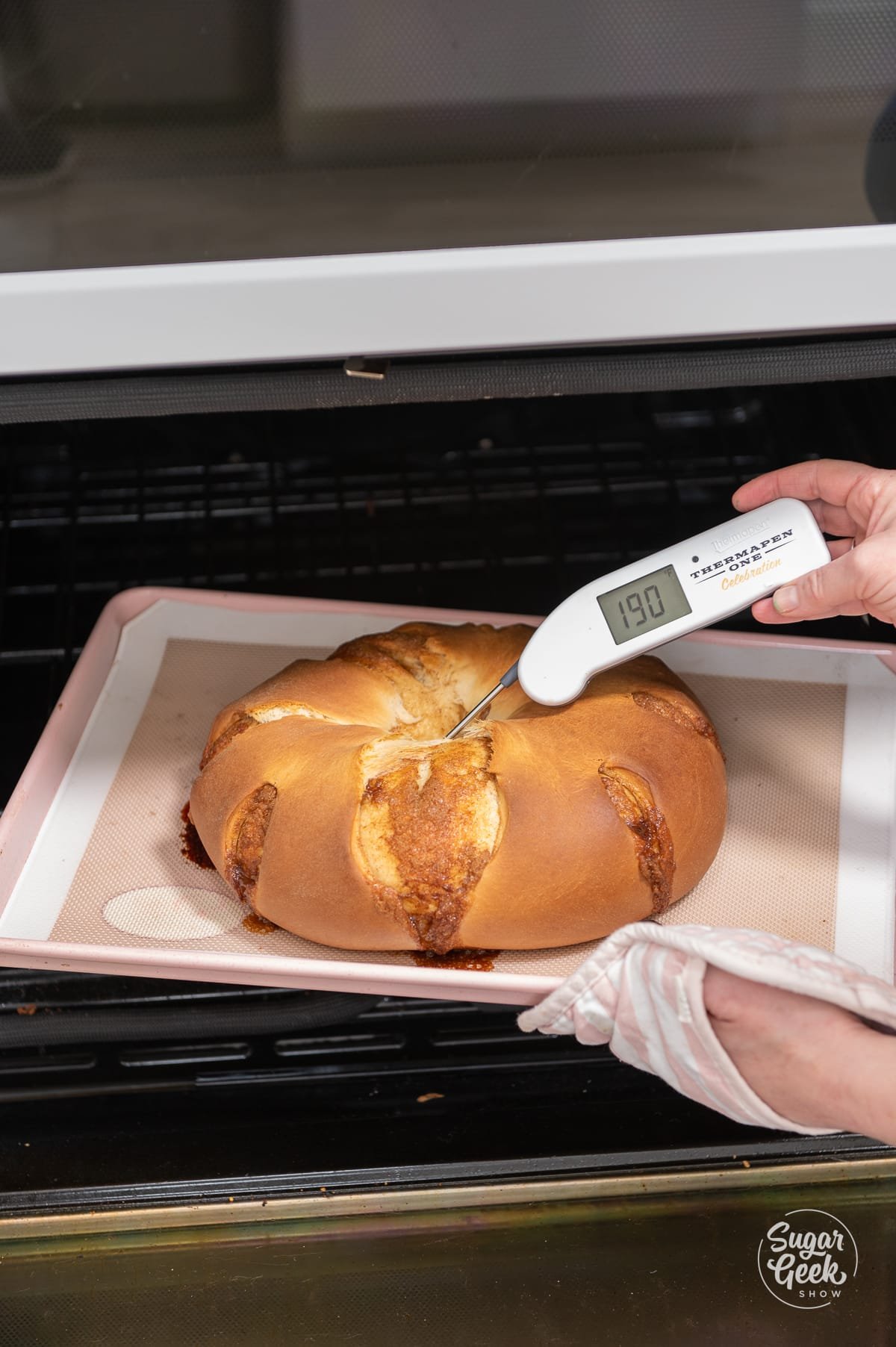
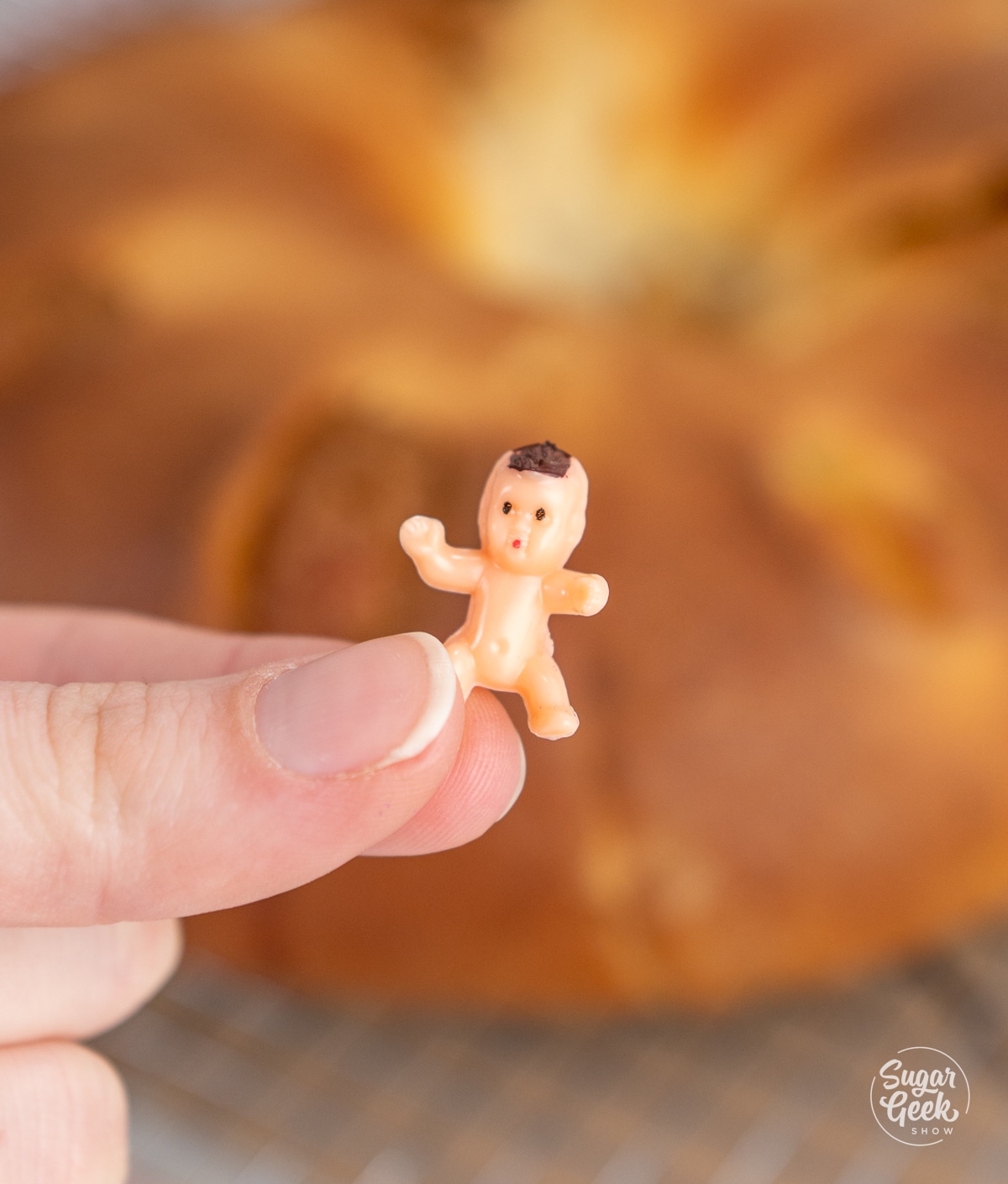

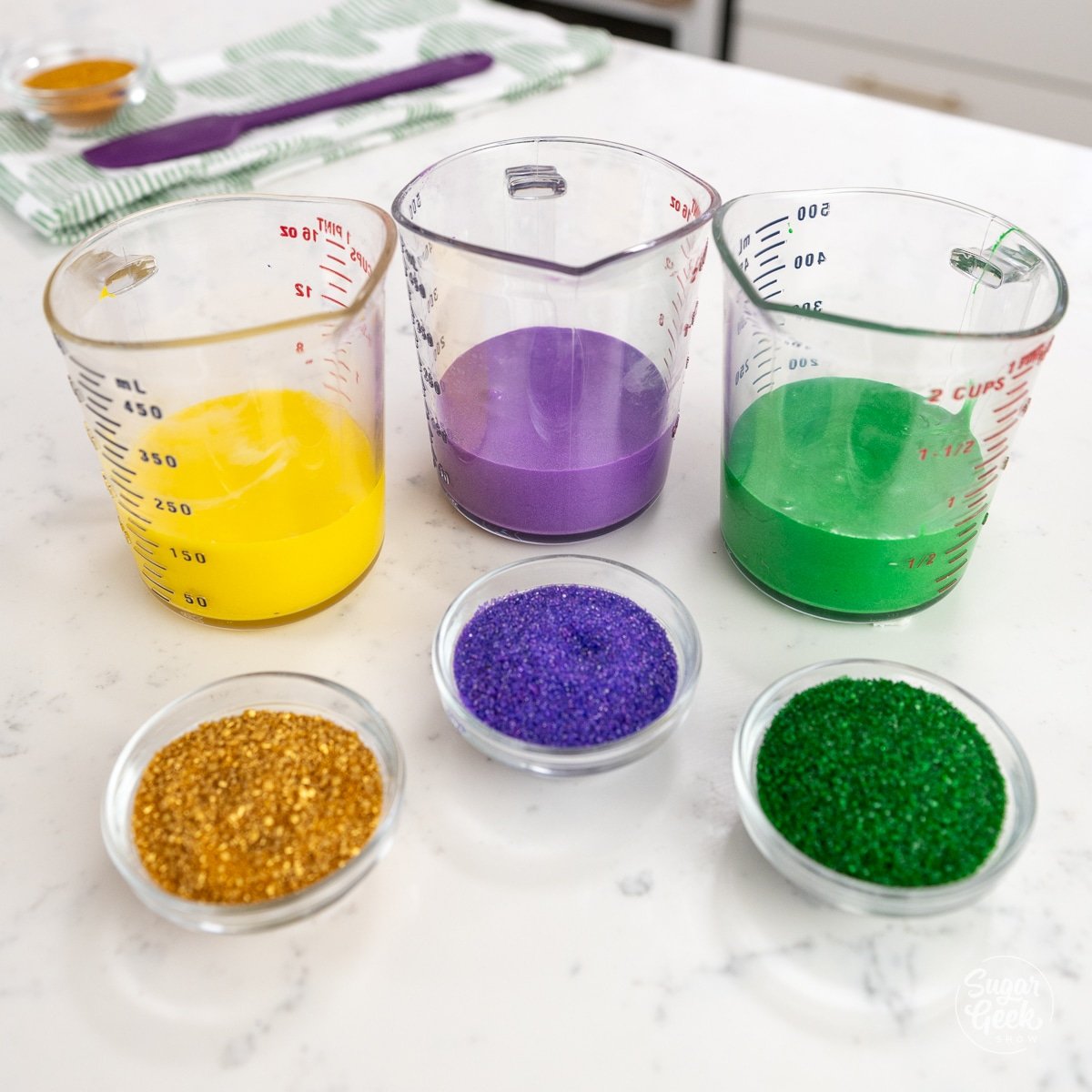
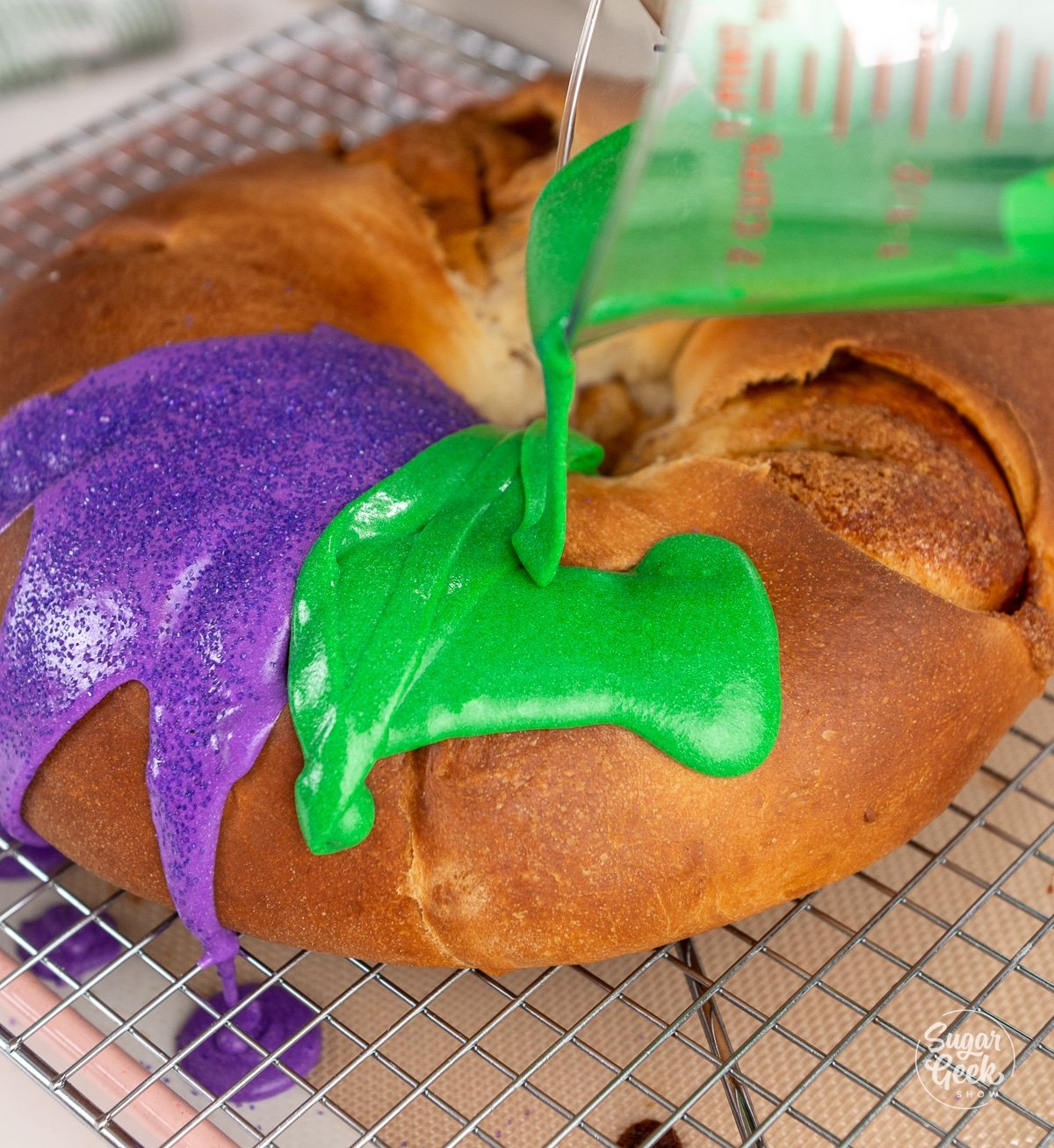
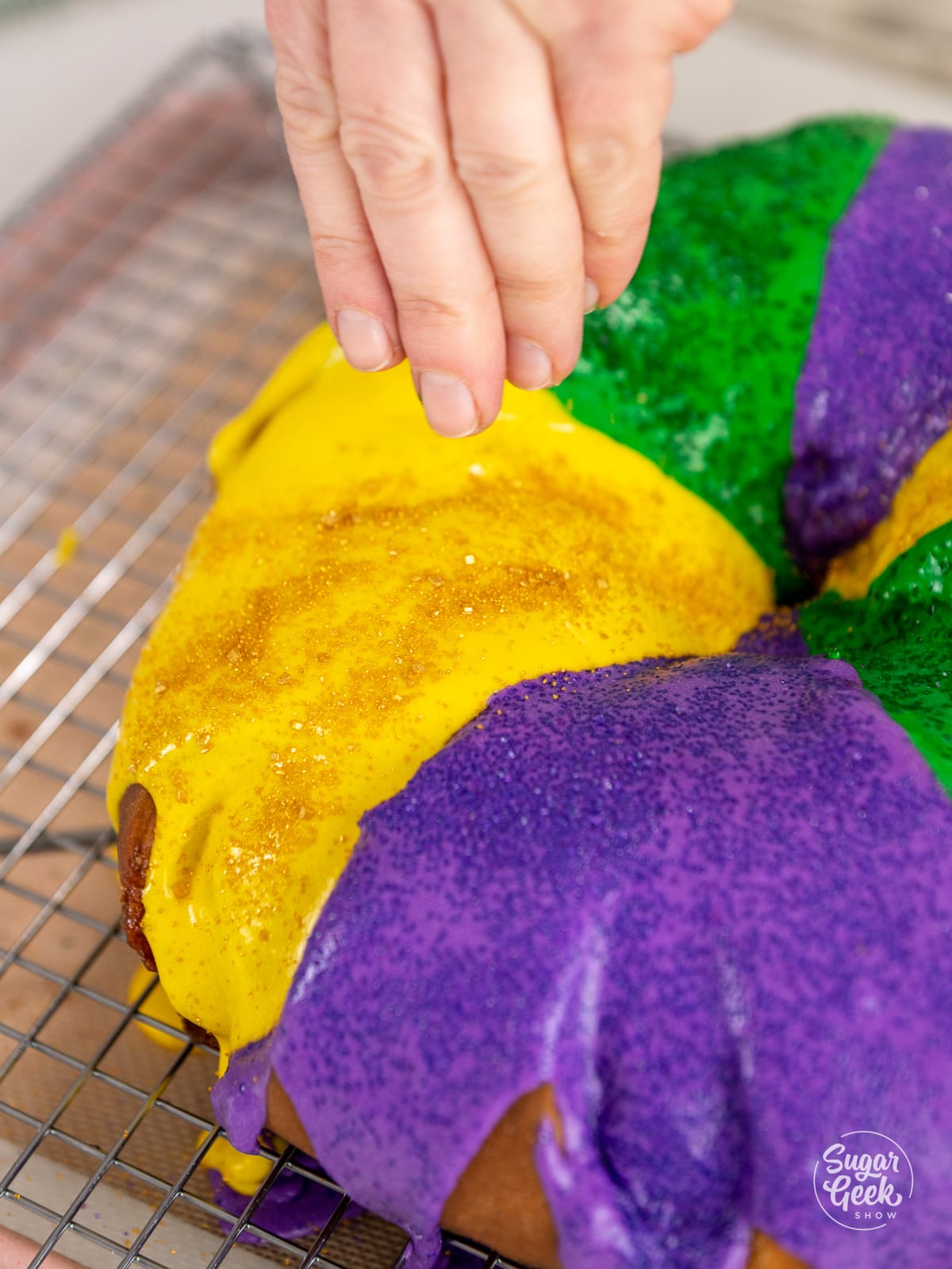
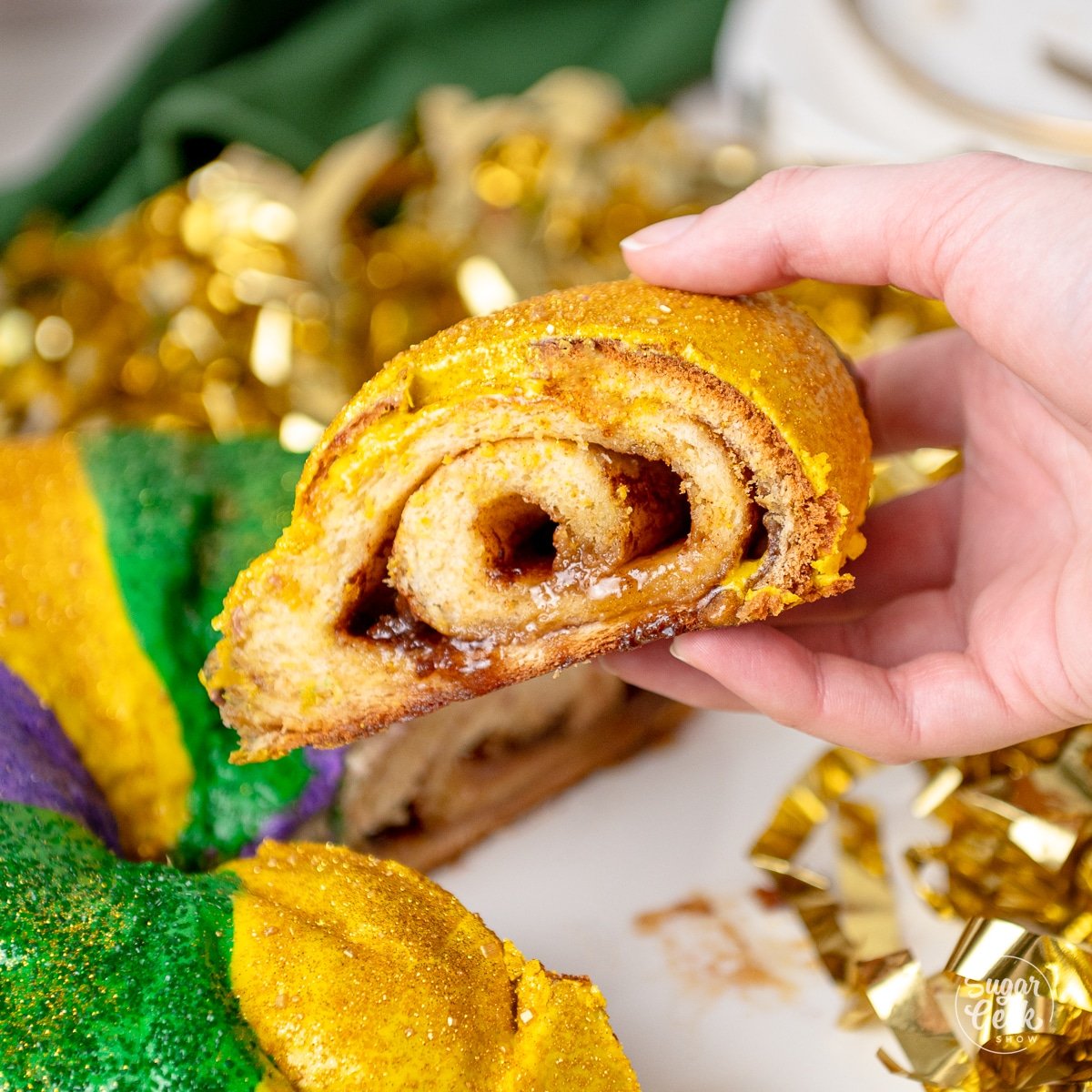
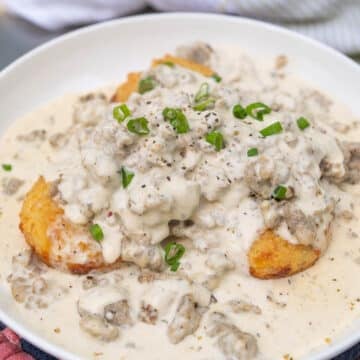
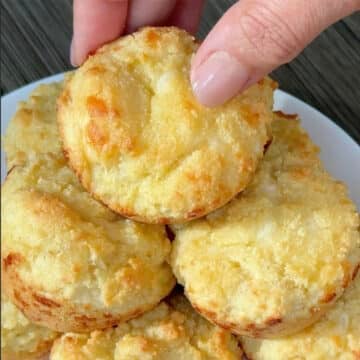
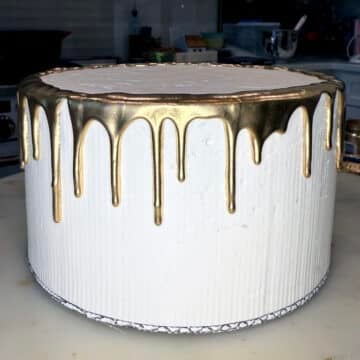
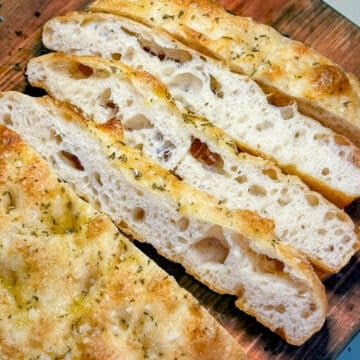
Leave a Reply